Law Firm in India
- Legal Articles

Patent Assignment in India
January 17, 2023 | Corporate & Commercial Law Patents are intellectual properties that provide exclusive rights to the owner for a specific invention, but which can be transferred to someone else through the process of patent assignment that must be duly executed as per legal norms.
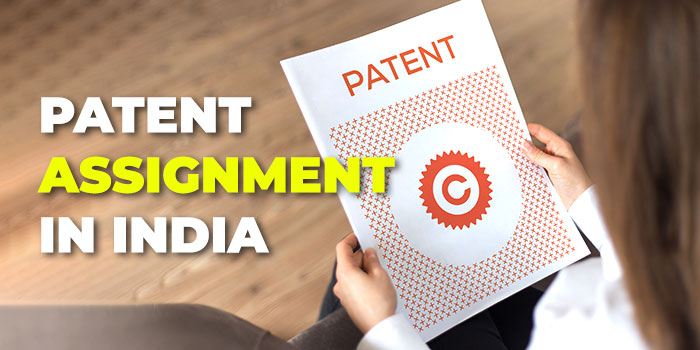
What is a Patent?
Need for patents, what is patent assignment, types of patent assignments.
- Legal Assignment: A legal assignment is where the assignee may enter their name as the patent owner in the government records. A patent created through a deed can only be assigned through a deed. Once the assignor has completed the process, the assignee gains all the rights of the patent.
- Equitable Assignment: Any form or agreement including a letter in which the proprietor agrees to share a certain share of the patent with another individual is referred to as the equitable assignment of the patent. While the assignee cannot get their name entered in the register as one of the owners, they can notify the register of their interest in the patent.
- Mortgages: Mortgages are assignments where the owner provides partial or complete right to an assignee in exchange for a certain amount of money. Once the amount is repaid, the owner gains back all rights to the mortgaged property. The lender cannot register themselves as the proprietor in the records, but get their name entered in the register as mortgagee.
Requirements for Patent Assignment
- As mentioned before, patent assignment can only be considered a valid assignment if it has been drafted in writing and duly executed through the legal process.
- The written draft must define all the rights and obligations of both the parties with respect to the patent.
- The assignee shall apply in writing to the Controller of Patents to enter their name into the register of patents. Once the Controller of Patents is satisfied that the assignee has a genuine interest in the patent, they shall enter the details of assignment into their register.
- Form-16 must be duly filled and filed before the Controller General of Patents, Designs and Trademarks. It records the necessary details that must be mentioned for assignment, such as name of the applicant, details of all parties involved, description of the draft through which assignment is being sought.
- Two copies of the deed must be attached to the application as well.
- Fees for the process varies for different individuals and entities and is different when applied physically and through the Internet. A detailed breakdown of the official fees for the process is mentioned in the First Schedule of the Patent Act.
Contents of Patent Assignment Agreement
- Details of the parties to the agreement, i.e., the assignor and the assignee.
- Description of the patent – registration number, date of registration, type of patent, etc.
- Consideration in lieu of assignment.
- Rights and obligations of all parties involved.
- An undertaking of the assignor that they have not assigned or otherwise dealt with patent to create a third-party interest in the patent.
- Termination clause.
- Dispute resolution clauses.
- Indemnity clause in favor of the assignee.
Difference between Assignment and Licenses
Amendments and termination.
- Amending Patent Assignment Agreement
- Termination of Patent Assignment Agreement
We can assist you with Patent Assignment Agreement concerns. You can get in touch with us by submitting a query below.
- Definition of Resolution plan will now include provisions for corporate restructuring: The amendment act has inserted an explanation in the definition of resolution plan to clarify that a resolution plan that proposes the insolvency resolution of a corporate debtor may include the provisions for corporate restructuring, including by way of merger, amalgamation and demerger.
- NCLT will have to record reasons for delay in discarding an application for initiation of CIRP: As per the Code, the NCLT must dispose of an application for initiation of CIRP within a period of 14 days from the receipt of application. However, there have been cases when the NCLT has taken more than 14 days to make a decision on the application. Therefore, to ensure speedy disposal and value maximization of the corporate debtor's assets, a proviso has been added which requires that NCLT to record its reasons in writing in case an application is not disposed within 14 days.
- Corporate Insolvency Resolution Process to be concluded within 330 days: Earlier, the IBC demanded completion of CIRP within 180 days including a one-time extension of 90 days. However, many a times the Courts have allowed removal of certain periods, for instance, time consumed in litigation, from the compulsory completion period resulting in a lot of unresolved CIRPs well beyond the time duration allowed in the IBC. The Amendment act makes it compulsory for a CIRP to be completed within 330 days including any extension of time granted and time taken under legal proceedings. It further states that any pending CIRPs that have been going on for over 330 days should be completed within 90 days from the date of commencement of the Amendment Act.
- Voting by authorised representative representing a class of financial creditors: To avoid any confusion and facilitate decision making in the Committee of Creditors, especially in cases where financial creditors are a large group, the Amendment Act provides that an authorized representative representing a class of financial creditors shall vote on behalf of all the financial creditors he/she represents in accordance with the decision approved by more than 50% of such financial creditors. This principle however would not be applicable in case of voting for withdrawal of CIRP.
- Amount payable to functional creditors and disagreeing financial creditors: The Amendment Act provides that payment of debts of operational creditors shall be the higher of
- the amount to be paid to these creditors at the time of liquidation of the corporate debtor u/s 53 or
- the amount that would have been paid to such creditors, if the amount to be distributed under the resolution plan had been distributed in accordance of priority as mentioned u/s 53 (1)
- NCLT has not approved or rejected a resolution plan
- an appeal is pending at the Supreme Court or at the NCLAT (National Company Law Appellate Tribunal)
- a lawsuit has been launched in a court challenging the decision of NCLT in relation to a resolution plan
- Committee of Creditors (COC) to contemplate way of distribution submitted in the resolution plan: Besides the current need of approval of resolution plan after keeping in mind the practicality and acceptability of the resolution plan, the amendment act requires that the CoC consider the manner of distribution proposed in the resolution plan by taking into account the order of priority amongst creditors, as prescribed u/s 53 (1) relating to liquidation waterfall, including the priority and value of security interest of a secured creditor.
- NCLT approved resolution plan will be binding on the Central Government, State Government or any local authority to whom corporate debtor owes a statutory debt: As per the Code, the approved resolution plan was only binding on the corporate debtor and its employees, creditors, members, guarantors and other stakeholders included in the resolution plan resulting in instances where the Government used to follow up for the balance dues after the said approval of resolution plan. The Amendment Act has now modified Section 31(1) to illuminate that any NCLT approved resolution plan will be binding on the Central Government, State Government and any local authority to whom a corporate debtor owes a debt in respect of payment of dues arising under any law.
- Liquidation after setting up the Committee of Creditors (COC): The Amendment Act simplifies by way of an explanation, u/s 33(2) which covers liquidation, that the COC may decide to liquidate the corporate debtor any time after the setting-up of the COC until the confirmation of the resolution plan, including at any time before the development of the information memorandum. This change is pertinent as there have been cases where NCLTs have demanded that a liquidation order may be passed only after failure of the CIRP even though an early liquidation would have resulted in value maximization.
Leave a Comment
How can we help you, write to us with your enquiries, questions or request a meeting with a lawyer to discuss your potential case. one of our experts would review the form and revert back shortly., thank you for getting in touch.
We appreciate you contacting us at India Law Offices. We will review the details that you have submitted and one of our experts will connect with you shortly.
Enquiry Form
What is the legal readiness of your business , you can schedule a no obligation 30 min call with our expert team to discuss your legal & tax needs, related articles.
Here are some of the other related articles authored by our experts which might be of interest to you.
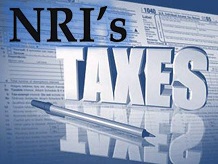
NRI Tax Residency Status in Pandemic Times
Generally, any individual living less than 182 days during taxable year is considered a non-resident Indian but the pandemic has created con..

United Kingdom - Market Entry & Business Opportunities
The regulatory and business environment in the United Kingdom supports good business, flexible labor market, encourage creativity, innovatio..

Medical Devices Industry in India – Business Opportunities and Advantages
Explore the dynamic landscape of India's booming Medical Devices industry. Discover key trends, market insights, supportive policies and opp..
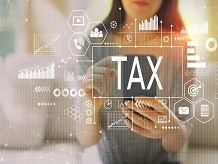
ITAT Allows Foreign Taxes Paid as Deduction for International Bank in India
Under the DTAAs, taxpayers can avail reliefs such as claiming tax credits for taxes paid abroad. The rules for claiming FTCs are generally c..

Is LEI Code Mandatory in India?
Any issuer who has issued or proposed to issue listed non-convertible securities, securitized debt instruments, or security receipts must ob..

Russia - Market Entry and Business Opportunities
Seek opportunities in Russia’s dynamic market. Navigate regulatory landscapes and cultural diversity for successful business expansion..
The Bar Council of India does not permit advertisement or solicitation by advocates in any form or manner. By accessing this website, www.indialawoffices.com , you acknowledge and confirm that you are seeking information relating to India Law Offices of your own accord and that there has been no form of solicitation, advertisement or inducement by India Law Offices or its members. The content of this website is for information purpose only and should not be interpreted as soliciting or advertisement. No material/information provided on this website should be construed as legal advice. India Law Offices shall not be liable for consequences of any action taken by relying on the material/information provided on this website. The contents of this website are the intellectual property of India Law Offices.
Patent Rights Unveiled: The Distinction Between Patent Assignment and Licensing in India
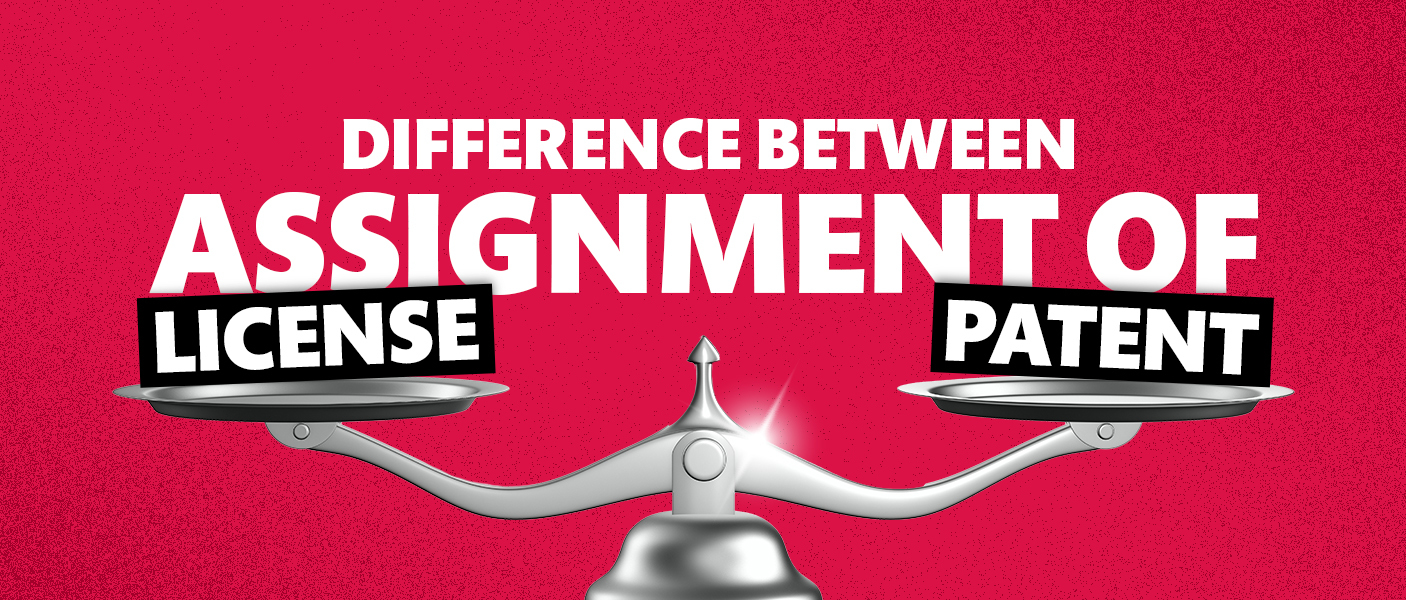
To safeguard our original invention of any form be it a piece of music, a work of art, a creatively written draft, a complex set of codes, or any such masterpiece that hatched from an intellectual mind, our Indian government has provided us with a particular set of rights called “ Intellectual Property Rights ” which are often taken lightly or ignored due to confusion like the patent assignment and patent licensing; about which we will be understanding in the article today. So, are you ready to know what they are, how they differ, and why and when you need them?
Patent? A Quick Intro
To safeguard any idea or invention from being used, reproduced, or sold without any consent of the inventor, the Indian government under The Patents Act of 1970 , allows any inventor to apply for a patent which is a Patent Right - an intellectual property right that provides exclusive rights to the owner for a specific invention to manufacture, use, exploit the patented product or process for a limited period and take action against those who misuse it.
A patent is like a safety token that is awarded to the original inventor of the invention for the innovation but can be transferred as well by the inventor itself to a third party, providing permission to use, make, or sell the invention and gain monetary benefits. Now there’s a procedure to pass on the rights to someone and that’s where patent assignment and patent licensing come into the picture which we will discuss in detail below.
Understanding Patent Assignment
Although the term ‘assignment of patent’ is not defined in the Indian Patents Act of 1970, patent assignment is like a permanent deal of IP between two parties. An assignment agreement is a legally binding contract that transfers all or part of the ownership rights of a patent from the assignor (the current patent holder) to the assignee (the new rights holder). The assignee then has the exclusive right to prevent others from making, using, selling, or offering to sell the invention, including the right to sue anyone who infringes on the patent.
To be valid, a patent assignment must be properly documented by an IP lawyer , signed by the parties involved, and registered according to Section 19 of the Patent Act.
Patent assignments are of three kinds (i) legal; (ii) equitable; and (iii) mortgages.
(i) Legal Assignment -
A legal assignment is the formal transfer of patent rights from the assignor (the original patent owner) to the assignee (the new patent owner). The assignee then enters their name as the patent owner in government records. Such an assignment is typically executed through a deed, and once the process is completed, the assignee gains full ownership rights to the patent.
(ii) Equitable Assignment -
Any form or agreement that includes a letter stating that the assignor has agreed to share a certain portion of the patent rights with the assignee is termed an equitable assignment of the patent. Unlike in legal assignment, the assignee cannot enter his/her name into the official government records as a patent owner but can notify the patent office of their interest in the patent. Equitable assignments may involve sharing specific benefits or profits from the patent, but the assignee does not gain complete ownership rights as in a legal assignment.
(iii) Mortgages -
An agreement where the patent owner transfers the patent rights either wholly or partly to the assignee in return for a lump-sum payment of royalty. Once the assignor repays the sum to an assignee, the patent owner gains back the patent rights to the mortgaged property. Even in this assignment, the assignee's name is not entered as a patent owner in government records but is mentioned as a mortgagee, reflecting their interest in the patent.
Decoding Patent Licensing
Licensing is a permission-based arrangement wherein the patent owner (licensor) grants rights to another party (licensee) to use the patented technology under predefined terms. Unlike assignment, ownership remains with the licensor.
Patent Act section 70 allows a patentee to grant a license through a contractual agreement to allow the licensee to make, use, or exercise the invention. The licensor and licensee sign the contract which certifies the shared use of IP rights (in part or whole) for mutually agreed payments (i.e., royalties).
A patent licensing agreement can be classified as exclusive, non-exclusive, voluntary, statutory, co-exclusive, sole-licensing, express and implied, limited, and compulsory. However, the two agreements that are commonly agreed upon are:
1. Exclusive License Agreement:
An agreement that gives a grant of exclusive rights to the licensee (the person or entity receiving the license) by the licensor (the patent holder), to use the patented invention; excluding all others (including the patentee) to exploit, use, or license the invention to anyone else during the term of the agreement. The rights can be divided and assigned, restrained entirely, or in part. The patent holder retains ownership of the patent, but only the licensee holds exclusive rights for the agreed-upon scope. The simplest instances of exclusive licensing agreements are copyright, trademarks , and patent licenses.
2. Non-exclusive License Agreement:
A license agreement in which the licensee can exploit the patented invention, but not exclusively. Under this arrangement, the patent holder may exploit the invention himself and can grant licenses to multiple parties, including the licensee, for the same invention for the length of the agreement entered into.
The Distinction Between Patent Assignment and Licensing in India
Now that you understand that patent licensing and patent assignment are two different things, here are some other factors that distinguish them further.
Key Points about Patent Assignment:
Parties involved -.
Assignor (Patent Holder) and Assignee (Third Party).
Type of Transaction -
Permanent transfer of ownership of the patent from the assignor to the assignee for consideration.
Rights Transferred -
The patent holder assigns all or a part of their rights to the assignee. The assignee becomes the owner of the transferred rights.
Nature of Interest -
Generally irrevocable, but rights may be revoked in specific circumstances.
Rights Available -
The assignee can sue for patent infringement and exercise all other rights available to a patent holder.
Consideration -
Lump-sum fees are paid to the assignor upon executing the assignment agreement.
Notice Requirement -
Formal, written documentation, such as an assignment agreement, to be recorded with the relevant patent office.
Key Points about Patent Licensing:
Licensor (Patent Holder) and Licensee (Third Party).
Temporary permission granted by the licensor to the licensee to use the patented invention on the terms outlined in the licensing agreement.
Rights Granted -
The licensee is authorized to use the patented invention within the scope defined in the license agreement. The patent holder retains ownership.
Revocable, subject to the terms of the license agreement.
The licensee does not usually have the right to sue for infringement or sub-license the rights further unless otherwise agreed.
Royalties or compensation based on sales, usage, or other agreed-upon terms are paid to the licensor by the licensee.
Flexibility -
Licensing agreements can be tailored to specific needs, allowing licensors to grant different rights to different licensees for various uses.
In both cases, the Indian Patent Act of 1970, governs the provisions for licensing and assigning patents. It's important to note that the specific terms and conditions of both assignment and licensing agreements can vary and should be carefully negotiated and documented based on the parties' intentions and requirements, and registered to be considered valid.
In Conclusion,
Grasping the distinctions between patent assignment and licensing is pivotal for making informed decisions in the realm of intellectual property. Patent assignment involves a change in ownership, while licensing offers a strategic partnership without relinquishing ownership. Understanding the legal requirements and implications in India is essential to navigate these paths successfully.
Popular stories

How to select – Choose or Create Trademark
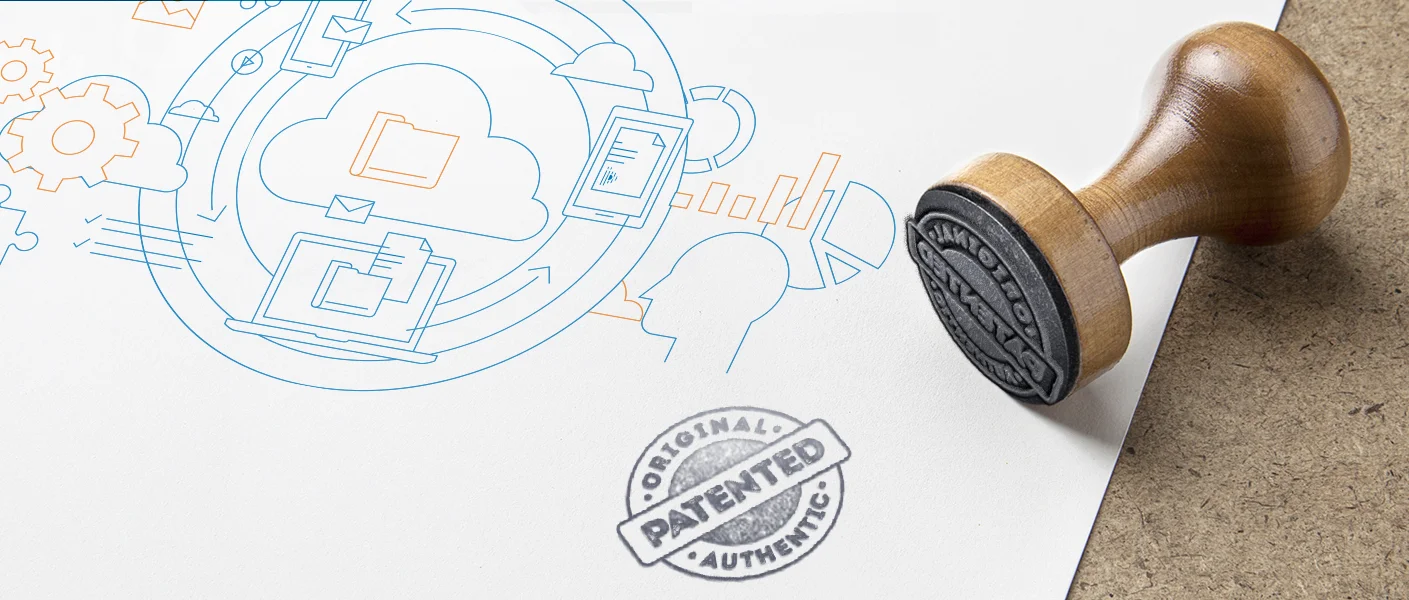
Understanding the relevance of software patent for IT businesses
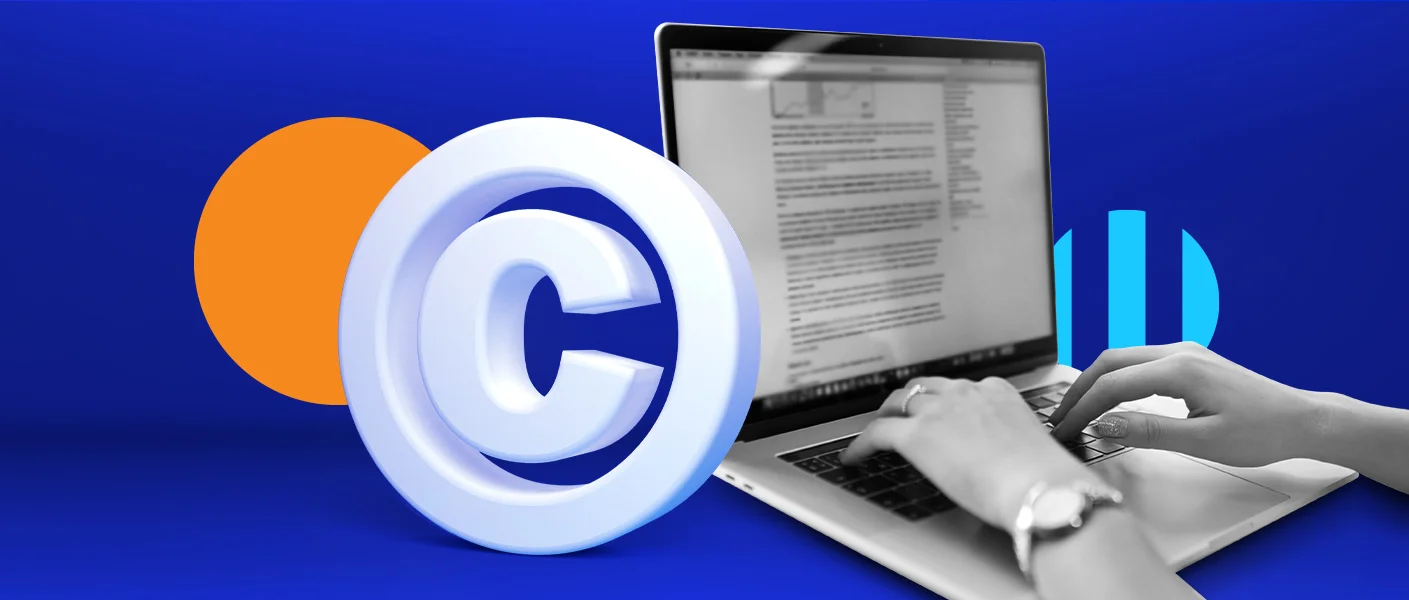
Know about copyright and its necessity for authors and writers
We Connect To Collaborate
We believe in participating in national and international events that helps us enhance our knowledge base and connect with people from diverse backgrounds. At Parker & Parker Co. LLP, we have expanded our network in each field of intellectual property law to give our clients the best that they deserve.
- Phone : to connect with us call at: +91-11-40123000
- Email : [email protected]
- Our facebook
- Our Twitter
- Our linkedin
- Our whatsapp
- Map Location
- Domain Names
- Geographical Indication
Patent Fee Calculator can be used to calculate the official cost of filing a Patent application in India. Fill in the required details and get the estimate of official/ Government fees to file a patent in India.
- Patent Search
- Patent Drafting
- Patent Application Types
- Patent Filing
- PCT National Phase Application India
- Reply to Patent FER India
- Foreign Filing License
- Patent Filing Fees & Forms
- Patent Registration
- Patent Flowchart
- Patent Opposition
- Patent Annuity Payments
Patent Assignment Agreement India
- Working of Patent Statements India
- Revocation of Patent
- Compulsory Licensing
- Patent Infringement
- Patent Act India
- PCT Application
- PCT Filing Procedure India
- Indian Patent Office – ISA
- Patent Application Filing Trends
- Section 8 & Rule 12
- Patent Litigation
- Online Filing of Patents
- Patent & Technologies
- Patent Fee Cost Calculator India
- Patenting wars in smartphone Technology
- Patents in Automobile Industry
- Patents in FMCG
- Patents in Home Automation
- PATENTS BIOMEDICAL HEALTHCARE
- PATENTS IN MECHANICAL ENGINEERING
- PATENTS IN AVIATION INDUSTRY
- PATENTS IN ELECTRONICS INDUSTRY
India plans to shift from Minimum Wages to Living Wages by 2025
April 18, 2024

Documents required for Patent Assignment in India:
- Application for recordal of patent assignment on Form-16
- Deed of Assignment
- Documents evidencing transfer/assignment/sale/license of a patent or affecting the proprietorship
- The application shall be accompanied by two copies of the deed of assignment
Official Fee for Patent Assignment in India
The official fee for patent assignment in India varies depending on the type of applicant. The official fee for patent assignment for e-filing for natural persons and/or startup is INR1600/-, for small entity either alone or with natural person and/or startup is INR4000/- and for others, either alone or with natural person and/or startup and/or with small entity is INR8000/- in respect of each patent.
*Official fees for patent assignment depends on the type of applicant. Professional fees not included.
The “First Schedule” appended to Rules, providing for the official fees for assignment of patent in India can be accessed here .
Related Posts
- Patent Filing Fees and Forms
- Patent Renewal / Patent Annuity Payments
For more information on Patent Assignment Agreement India, patent license, patent sale or transfer of patent rights, licensing of patents in India please write to us at: [email protected]
To Know More about Patents in India click on the link below:
Patent law in India
Cost of Patent in India
Patent Searches in India
Submit A Query
* I confirm that I have read and agree to this Disclaimer , Cookie Policy & Privacy Policy .

- Coaching & Training
- Legal Research
Patent Assignment in India – Patent Attorney

Protect Your innovation Worldwide
Provisional patents.
Secure your idea for 12 months and convert to international patent under PCT within 12 months
International patents
Patent Cooperation Treaty (PCT) provides filing mechanism for global protection of innovative products and services.
Section 20 and Rules 35 and 36 of the Patents Act 1970 govern the procedure for the substitution of applicants in case of patent applications. If after filing an application for patent, the applicant assigns the rights of his invention by written assignment or agreement to some other person, then that person (the claimant) may make an application, in Form 6 (sample Form 6, pasted below) along with a fee of Rs. 4,000/- (in case of an online filing by a legal entity such as corporate), for substituting his name.
Write to us now
Advantage of patent filing.
- Visualise execution of a new business idea
- International Filing in 12 months
- National Phase Entry in 30 months
- Synchronize business milestones
- Establish Patent Pending Rights
- Explore Patent Licensing for Blockchain Innovation
- Manage all filing deadlines
- Close Patent Monetization Deals for Innovations
Patent assignment in India
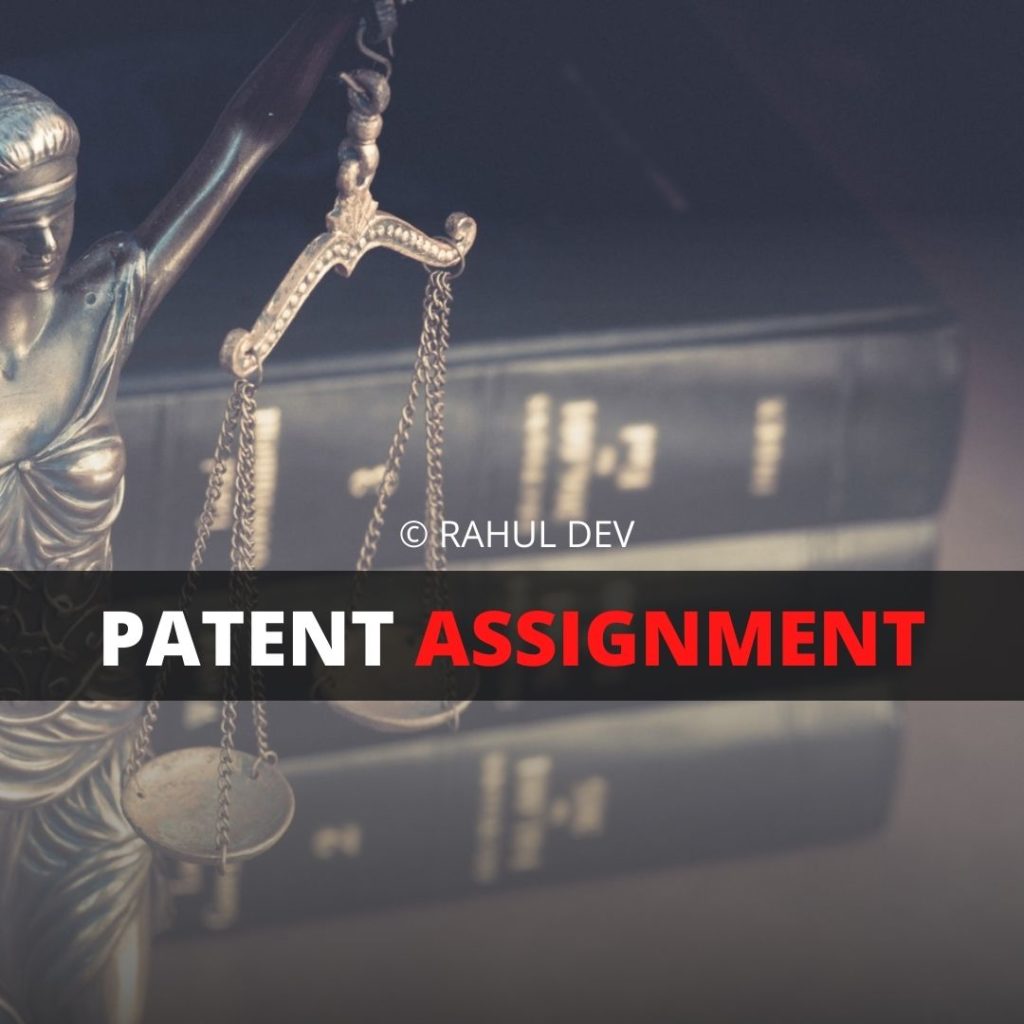
The application should include an origin al patent assignment or patent assignment agreement. An application should be made in duplicate and be accompanied by the statement setting out fully the facts upon which the applicant relies and the directions which he seeks.
Such an application may be made any time before the grant of the patent. If the Controller is satisfied that by any assignment in writing the other person (to whom the invention has been assigned) be entitled to:
- a patent; or
- a specific interest in the patent; or
- an undivided share of the patent; or
- to a specific interest in the undivided share of the patent, then the Controller may direct that the application shall proceed in the name of the other person (the claimant).
In case there are two or more joint patent applicants currently on file, then the consent of each of the joint applicants is required. In case of addition of a new applicant, the agreement, assignment or operation of law should be to effect that, if a patent were to be granted ultimately, then the newly added applicant would be entitled to the rights of the existing applicant.
The Controller may call for proof of tide or written consent of patent assignors. There may be a situation in case of a patent application filed by joint applicants and one of the applicants dies before the grant of the patent. In that case, in accordance with Section 20(4) and Rule 35, the request by the survivor(s) of the patent applicant, to proceed with the application in their name, can be made in Form 6 along with a fee of Rs. 4000/-, in case of an online filing, which shall also include the consent of the legal representative of the deceased person and the proof of death.
The form is used for providing details such as, names of the applicant(s) to be added or removed, names of original applicants and reason for the change, among other details that are to be entered.
In case the survivor(s) is an individual then the fee that he is required to pay is Rs. 800/- in case of an online filing. Such a request should be made before the patent is granted.
Form 6 may also be used to add or remove an applicant from an Indian national phase patent application under PCT where a change in applicant has occurred after the international filing date , and the change is revealed in a notification from the International Bureau (Form PCT/IB/306).
It shall be illustrious that adding or removing an applicant is not the same as changing or approving the name of an applicant. In the case of clerical errors or legal name change of a person or an organization, the change can be made using Form 13 as a request for amendment.

Apple Podcasts | Google Podcasts | Spotify | Others
Patent Due Diligence
Patent attorneys regularly perform patent due diligence to ensure that patent assignment is duly recorded with the patent office. In practice, patent due diligence refers to a legal audit to determine the quantity and the quality of patents owned by or licensed to, a company, business or individual.
The patent due diligence also covers as to how such patent rights are protected by the relevant company or business. Patent assets add significant value to a business, and hence require the appropriate legal protection by way of patent filing and patent due diligence.
Our team of advanced patent attorneys assists clients with patent searches, drafting patent applications, and patent (intellectual property) agreements, including licensing and non-disclosure agreements.
Advocate Rahul Dev is a Patent Attorney & International Business Lawyer practicing Technology, Intellectual Property & Corporate Laws. He is reachable at rd (at) patentbusinesslawyer (dot) com & @rdpatentlawyer on Twitter.
Quoted in and contributed to 50+ national & international publications (Bloomberg, FirstPost, SwissInfo, Outlook Money, Yahoo News, Times of India, Economic Times, Business Standard, Quartz, Global Legal Post, International Bar Association, LawAsia, BioSpectrum Asia, Digital News Asia, e27, Leaders Speak, Entrepreneur India, VCCircle, AutoTech).
Regularly invited to speak at international & national platforms (conferences, TV channels, seminars, corporate trainings, government workshops) on technology, patents, business strategy, legal developments, leadership & management.
Working closely with patent attorneys along with international law firms with significant experience with lawyers in Asia Pacific providing services to clients in US and Europe. Flagship services include international patent and trademark filings , patent services in India and global patent consulting services .
Global Blockchain Lawyers ( www.GlobalBlockchainLawyers.com ) is a digital platform to discuss legal issues, latest technology and legal developments, and applicable laws in the dynamic field of Digital Currency, Blockchain, Bitcoin, Cryptocurrency and raising capital through the sale of tokens or coins (ICO or Initial Coin Offerings).
Blockchain ecosystem in India is evolving at a rapid pace and a proactive legal approach is required by blockchain lawyers in India to understand the complex nature of applicable laws and regulations.
Read Our Blogs
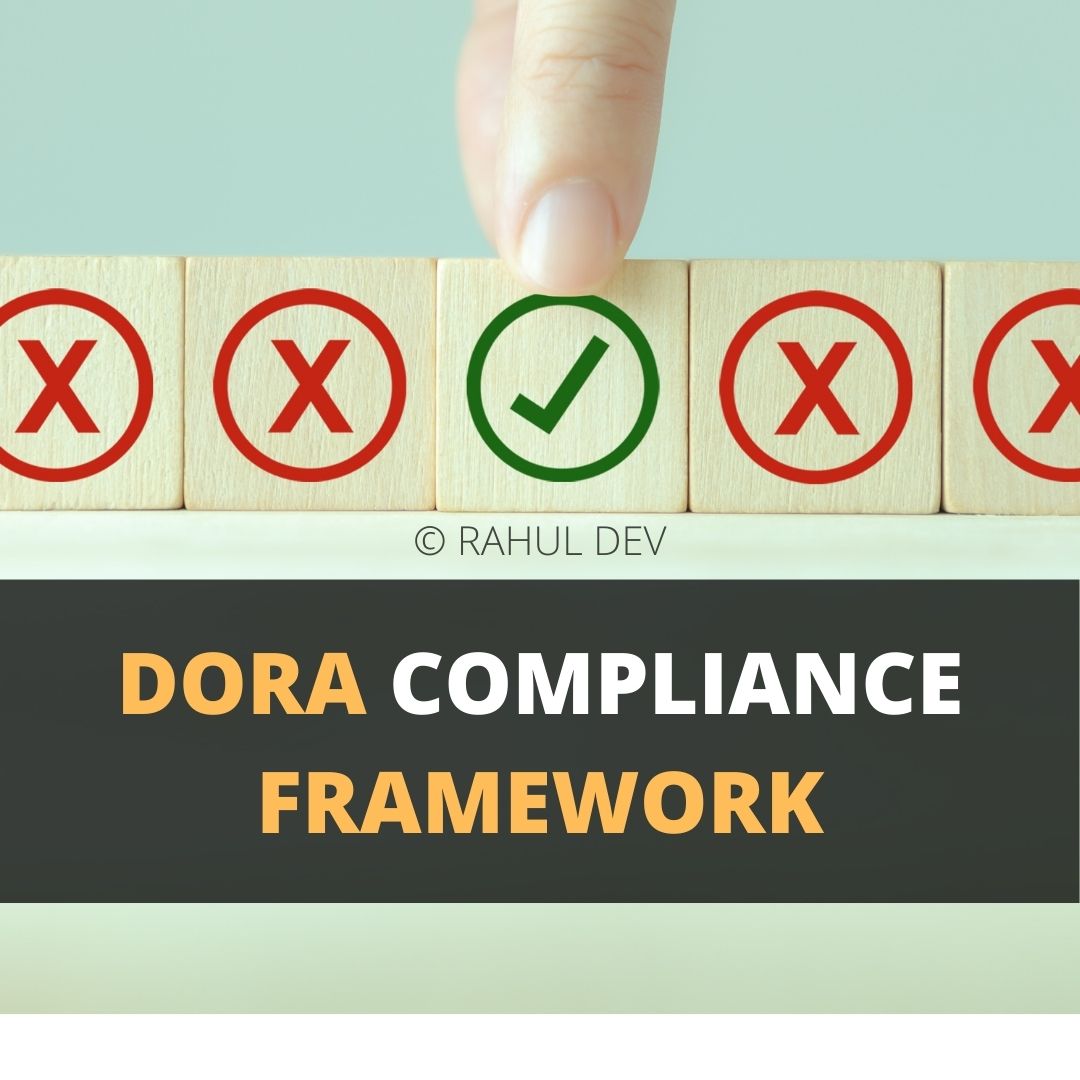
DORA Compliance Framework | DORA Compliance Checklist

Comprehensive Guide to Launching an AI Startup

How to Design Tokenomics and Develop Token Economics

How to Launch Cryptocurrency Trading Platforms and Apps
Share with friends.
- Coaching and Training
- Patent Basics
- Arbitration

Patent Laws and Regulations India 2024
ICLG - Patent Laws and Regulations - India Chapter covers common issues in patent laws and regulations – including enforcement, amendment, licensing, term extension, and prosecution.
Chapter Content Free Access
1. patent enforcement, 2. patent amendment, 3. licensing, 4. patent term extension, 5. patent prosecution and opposition, 6. border control measures, 7. antitrust law and inequitable conduct, 8. current developments.
1.1 Before what tribunals can a patent be enforced against an infringer? Is there a choice between tribunals and what would influence a claimant’s choice?
A patent can be enforced against an infringer only in Civil Courts and not below the Court of a District Judge. For Chennai, Delhi, Kolkata and Mumbai, a patentee can file a suit for infringement even in the High Court if the claimant chooses to value the suit greater than the limit prescribed by each High Court. For example, a suit for infringement of a patent would be filed only before the Delhi High Court if the value of the suit exceeds INR 2 Crores (approximately USD 0.25 million). However, as the value of the suit increases, so does the value of the Court fee, and this could influence the claimant’s choice between a District and High Court in aforesaid jurisdictions.
Although a claimant can choose between a District and High Court, such a choice becomes redundant once the defendant files a counterclaim seeking revocation of the patent. In such a scenario, the suit is heard by the High Court regardless of where the claimant chose to file it first. For instance, if the claimant files a suit for infringement before a District Judge, the case would be transferred to the concerned High Court if the defendant files a counterclaim seeking revocation of the subject patent.
A claimant may file a suit for an infringement at (a) the place where the cause of action has arisen, or (b) the residence or place of business where the defendant is located. Thus, apart from choosing between a District and High Court, it is important to determine the Court(s) that would have territorial jurisdiction over the case. Multiple territorial jurisdictions may arise where the causes of action, viz . acts of infringement, have occurred in several places. The Court at each place has jurisdiction to try the suit.
1.2 Can the parties be required to undertake mediation before commencing court proceedings? Is mediation or arbitration a commonly used alternative to court proceedings?
Parties may undertake mediation, a commonly used alternative, before commencing court proceedings. Under Section 12-A of the Commercial Courts, Commercial Division and Commercial Appellate Division of High Courts (Amendment) Act, 2018, pre-suit mediation is mandatory if there is no urgent interim relief sought by the plaintiff.
Arbitration is also a commonly used alternative when the parties have agreed to arbitration under an agreement between them.
1.3 Who is permitted to represent parties to a patent dispute in court?
An Advocate under the Advocates Act, 1961, the plaintiff in person, or a recognised agent such as a person holding power-of-attorney for a party, are permitted to represent parties to a patent dispute in court.
1.4 What has to be done to commence proceedings, what court fees have to be paid and how long does it generally take for proceedings to reach trial from commencement?
After deciding the appropriate court having territorial jurisdiction over the case, the suit with the requisite court fee is presented along with an application seeking interim relief(s), such as an ex parte injunction. All documents must be filed (either original or photocopies) along with the suit upon which the claimant relies and which are in power, possession, control, and custody of the claimant. However, in case of urgent filing, the claimant may seek leave to rely on additional documents, which must be filed within 30 days of filing the suit.
The Court fee depends on the value of the suit and may range from 1–10% of the value depending on the jurisdiction. The value of the suit includes the amount of damages, the subject matter value, and value of other reliefs claimed.
Ideally, proceedings should reach trial within one to two years, especially after the enactment of the Commercial Courts Act, 2015. However, practically, a claimant should expect the commencement of the trial between two to three years following the initiation of a suit.
1.5 Can a party be compelled to disclose relevant documents or materials to its adversary either before or after commencing proceedings, and if so, how?
Relevant documents or materials are disclosed to the adversary only after the proceedings have commenced. However, under recent amendments to the Delhi High Court Rules, all documents/information considered confidential by the Court shall be permitted to be filed in a sealed envelope kept in the safe custody of the Registrar General. These documents can only be shown to three Advocates (excluding in-house counsels) and two external experts nominated by the opposite party.
1.6 What are the steps each party must take pre-trial? Is any technical evidence produced, and if so, how?
Pre-trial procedures include the collection of evidence of infringement to support the claims. The evidence of infringement may be collected by the claimant or an investigator. An affidavit of the person who has conducted the investigation and collected the evidence must be filed with such evidence to prima facie establish the infringement. This investigator may be called in as a witness later in the trial. Technical evidence in the form of an affidavit with documentary evidence and other evidence may also be produced to establish how the infringing product reads in terms of the claims of the patent.
1.7 How are arguments and evidence presented at the trial? Can a party change its pleaded arguments before and/or at trial?
The arguments, both for any interim relief or final relief, are orally addressed to the Court by each party. Normally, the plaintiff begins the arguments followed by the defendant. Subsequently, the plaintiff may argue in rebuttal. The parties may also submit written arguments, and a copy of each such written argument must be furnished to the opposite party.
The trial may commence either before the Court or a commission formed by the Court to examine witnesses. Generally, examination of witnesses before a commission is faster compared to examinations before the Court, although there is an extra cost burden for such commissions. The examination in chief of a witness is by way of an affidavit, which is further cross-examined by the opposite party. Such witnesses may also be permitted re-examination. The documents and other materials relied upon by such witnesses are taken on record if found to be relevant and admissible. Any objection towards admissibility and mode of proof of any evidence is noted during the trial and decided by the Court during the final arguments.
The Court may also appoint technical/scientific advisors to assist the Court in addition to the expert witnesses summoned by the parties. As regards expert witnesses, Delhi High Court has even permitted “hot-tubbing”, in that the experts of both sides are, inter alia , examined together by the Court.
1.8 How long does the trial generally last and how long is it before a judgment is made available?
The length of the trial depends on various factors, such as the number of witnesses of each party, whether the examination is before a commission or a Court, the time taken in cross-examination of each witness, etc. Due to these factors, a trial may take three to five years, which may be reduced substantially if the examination is carried out before a commission.
After the trial and final arguments, Courts fix a date for the pronouncement of a judgment. It may, however, take a few days to obtain a certified copy of the judgment and a few weeks or a month before a decree sheet is drawn.
1.9 Is there any alternative shorter, flexible or streamlined procedure available? If so, what are the criteria for eligibility and what is the impact on procedure and overall timing to trial?
As already mentioned above, the trial may be expedited by choosing to examine the witnesses before a commission appointed by the Court. In this procedure, the Court appoints another Advocate or a retired Judge as a commissioner before whom the witnesses would be examined and the entire evidence would be adduced. Since the Commissioners can fix hearings at the convenience of the parties and the witnesses, there are fewer adjournments and the examination may even take place continuously, reducing the duration of the entire trial.
For expert witnesses, the Delhi High Court has permitted the technique of “hot-tubbing” by which expert witnesses give evidence simultaneously in each other’s presence and in front of the Judge, who puts the same question to each expert witness. This makes it possible to identify key issues of a dispute and possibly evolve a common resolution for all of them. Since the expert witnesses need not undergo lengthy procedures of examination and cross-examination separately, the duration of the trial can be reduced significantly.
Apart from the above, the identification of important witnesses and making them available promptly also reduces the duration of a trial.
1.10 Are judgments made available to the public? If not as a matter of course, can third parties request copies of the judgment?
Judgments are pronounced in an open court, as well as being published in leading journals. Third parties can request copies of the judgments.
1.11 Are courts obliged to follow precedents from previous similar cases as a matter of binding or persuasive authority? Are decisions of any other jurisdictions of persuasive authority?
The precedents from the Supreme Court on previous similar cases are a binding authority. What is binding is ratio decidendi , i.e., reasons for deciding the legal point, and obiter dicta , i.e., decisions on points not necessary to decide.
The precedents from High Courts are not binding but have persuasive authority. However, precedents from a High Court are treated as binding for the Courts subordinate to that High Court unless contrary to any precedent from the Supreme Court or another High Court. It is, however, necessary in every case that precedents are not distinguishable on facts.
Regarding foreign judgments, the same only have persuasive value.
1.12 Are there specialist judges or hearing officers, and if so, do they have a technical background?
No, there are no specialist judges or hearing officers in Court. However, in 2021, the Intellectual Property Division (IP Division) was created in the High Court of Delhi. The IP Division deals with all matters relating to IP rights including fresh and pending IP. These cases include appeals against the decisions of the Patent/Trademark/Copyright Offices, revocation/cancellation actions and applications for rectification of the patents/trademark registers.
1.13 What interest must a party have to bring (i) infringement, (ii) revocation, and (iii) declaratory proceedings?
A patentee or, if the patentee refuses, a registered exclusive licensee, or a compulsory licensee may bring an action against infringement.
A petition for revocation of a patent may be filed only by a “person interested” or the Central Government. A “person interested” includes a person engaged in or promoting research in the same field as that to which the invention relates.
Any person may establish a suit for a declaration of non-infringement. In case of groundless threats of infringement proceedings against any person, such a person can establish a suit for a declaration to the effect that such threats are unjustifiable.
1.14 If declarations are available, can they (i) address non-infringement, and/or (ii) claim coverage over a technical standard or hypothetical activity?
The declarations are available and address non-infringement.
Courts have even made declarations claiming coverage over a technical standard; however, such declarations have been made in a suit of infringement and not separately.
1.15 Can a party be liable for infringement as a secondary (as opposed to primary) infringer? Can a party infringe by supplying part of, but not all of, the infringing product or process?
Yes, a party can be liable for infringement as a secondary infringer or for the supply of a part of an infringing product or process if the predominant use of the same creates infringing goods.
1.16 Can a party be liable for infringement of a process patent by importing the product when the process is carried on outside the jurisdiction?
Yes, a party can be liable for infringement of a process patent by the importation of a product provided such product is obtained directly by that process even though the process is carried on outside the jurisdiction.
1.17 Does the scope of protection of a patent claim extend to non-literal equivalents (a) in the context of challenges to validity, and (b) in relation to infringement?
There are no clear precedents on the doctrine of equivalents. Having said that, the Delhi High Court has held in one case that if the infringing goods are made with the same object in view, which is attained by the patented article, then the minor variation does not mean that there is no piracy, and such person is guilty of infringement if he makes, what is in substance the equivalent of the patented article, some trifling and unessential variations can in this case then be ignored.
1.18 Can a defence of patent invalidity be raised, and if so, how? Are there restrictions on such a defence e.g. where there is a pending opposition? Are the issues of validity and infringement heard in the same proceedings or are they bifurcated?
A defence of patent invalidity can be raised in a suit for infringement by filing a counterclaim. Once a counterclaim is filed, the suit, if it is not already pending before the High Court, is transferred to the High Court and only the High Court can decide on the validity of the patent even where there is pending opposition or revocation petition between the same parties before any other forum. However, the Court may also take a position to wait for the other forum (Patent Office) to decide the question of invalidity.
The issues of validity and infringement are heard in the same proceedings before the High Court if the validity of a patent is challenged in a counterclaim.
1.19 Is it a defence to infringement by equivalence that the equivalent would have lacked novelty or inventive step over the prior art at the priority date of the patent (the “ Formstein defence”)?
There is no clear precedent on the “ Formstein defence” in India.
1.20 Other than lack of novelty and inventive step, what are the grounds for invalidity of a patent?
The other grounds for invalidity of a patent are:
- The invention has been obtained wrongfully.
- The invention is publicly known, or it has been publicly used in India before the priority date.
- The invention is in accordance with a non-patentable subject matter.
- The complete specification is not sufficiently described.
- The applicant has not complied with the requirement of Section 8 or has provided materially false information.
- The application was not filed within 12 months of filing the first application in a convention country.
- The complete specification does not disclose or wrongly mention the source or geographical origin of biological material.
- The invention is anticipated with regard to traditional knowledge of any community, anywhere in the world.
1.21 Are infringement proceedings stayed pending resolution of validity in another court or the Patent Office?
No, infringement proceedings are not stayed pending resolution of validity. However, in certain situations, the Courts may take a position to direct the Patent Office to first decide the issue of validity or may club proceedings before different courts for the same patent, and wait to first decide on the validity of the patent by one of the Courts.
1.22 What other grounds of defence can be raised in addition to non-infringement or invalidity?
In a suit for infringement, Indian patent law does not provide any other ground of defence in addition to non-infringement and invalidity.
1.23 (a) Are preliminary injunctions available on (i) an ex parte basis, or (ii) an inter partes basis? In each case, what is the basis on which they are granted and is there a requirement for a bond? Is it possible to file protective letters with the court to protect against ex parte injunctions? (b) Are final injunctions available? (c) Is a public interest defence available to prevent the grant of injunctions where the infringed patent is for a life-saving drug or medical device?
Preliminary injunctions are available on both an ex parte and inter partes basis. The injunctions are granted on determination of which party has successfully established in its favour: (i) a prima facie case; (ii) balance of convenience; and (iii) irreparable loss and injury.
It is possible to file protective letters ( caveats ) with the Court to protect against ex parte injunctions.
Furthermore, final injunctions are also available.
There have been differing decisions of various High Courts on public interest as a defence to prevent the granting of injunctions. However, the Supreme Court of India in Colgate Palmolive (India) Ltd vs Hindustan Lever Ltd held that: “ [t]he decision whether or not to grant an interlocutory injunction has to be taken at a time when the existence of the legal right assailed by the plaintiff and its alleged violation are both contested and uncertain and remain uncertain till they are established at the trial on evidence…(v) [t]he issue is to be looked from the point of view as to whether on the refusal of the injunction, the plaintiff would suffer irreparable loss and injury keeping in view the strength of the parties case; (vi) [b]alance of convenience or inconvenience ought to be considered as an important requirement even if there is a serious question or prima facie case in support of the grant; (vii) [w]hether the grant or refusal of an injunction will adversely affect the interest of the general public which can or cannot be compensated otherwise .” (Emphasis added.)
1.24 Are damages or an account of profits assessed with the issues of infringement/validity or separately? On what basis are damages or an account of profits assessed? Are punitive/flagrancy damages available?
Yes, damages or an account of profits are assessed with the issues of infringement/validity. The basis of damages could be actual damages, a rendition of accounts, royalty rates, interest, and even punitive. Yes, punitive damages are available, although in rare cases where intentional and flagrant infringement is apparent.
1.25 How are orders of the court enforced (whether they be for an injunction, an award of damages or for any other relief)?
The orders of the Court are enforced either through the process of execution or, if the judgment debtor has not complied with the order of the Court, proceedings of contempt of court may also be initiated.
1.26 What other form of relief can be obtained for patent infringement? Would the tribunal consider granting cross-border relief?
As regards other forms of relief, the Court may also order that the goods which are found to be infringing, as well as materials and implements, the predominant use of which is in the creation of infringing goods, shall be seized, forfeited or destroyed.
Cross-border injunctions and other relief are not granted by Indian courts.
1.27 How common is settlement of infringement proceedings prior to trial?
Yes, settlement of infringement proceedings prior to trial is very common.
1.28 After what period is a claim for patent infringement time-barred?
After three years from the last act of infringement, a claim for patent infringement becomes time barred.
1.29 Is there a right of appeal from a first instance judgment, and if so, is it a right to contest all aspects of the judgment?
Yes, there is a right of appeal from a first instance judgment in which all aspects of the judgment may be contested.
1.30 What effect does an appeal have on the award of: (i) an injunction; (ii) an enquiry as to damages or an account of profits; or (iii) an order that a patent be revoked?
An appeal itself would not stop the execution of an injunction, enquiry as to damages or order of revocation. A decree passed by the Court of first instance would be enforceable even if an appeal is filed against it. However, if the appellate court stays the operation of the decree either entirely or in some parts, the extent of the decree stayed cannot be enforced. If the appellate court stays the award of an injunction, enquiry as to damages or the order of revocation during the pendency of the appeal, these reliefs cannot be enforced.
1.31 Is an appeal by way of a review or a rehearing? Can new evidence be adduced on appeal?
The powers of the appellate court under the Code of Civil Procedure are not merely to review the decree. The powers go beyond review and include the powers to decide the case finally, to remand back the case, to frame issues and refer them for trial or even re-trial and to modify the decree. An appellate court can modify the decree by reversing the decision or arrive at an altogether new finding based on the facts of the case. In this regard, the appellate court can take additional evidence and even re-consider the evidence already adduced before the Court of first instance.
1.32 How long does it usually take for an appeal to be heard?
There is no time fixed for hearing the appeal under the Code of Civil Procedure. It usually takes two to three years in deciding an appeal. However, the time taken by an appellate court in deciding an appeal depends on the complexity of the case such that those cases in which additional evidence is permitted by leave of the Court may take a longer time to decide.
1.33 How many levels of appeal are there? Is there a right to a second level of appeal? How often in practice is there a second level of appeal in patent cases?
Yes, the law provides a second level of appeal, but it is not a matter of right per se . An appeal from a decree passed by a District Court is appealable before a Single Judge of the High Court. The decree arising out of an appeal before the High Court can be appealed before the Supreme Court of India by way of a Special Leave Petition. Moreover, under the High Courts rules of different High Courts, and the Letters Patent Act, a decision arising from a Single Bench of a High Court is appealable before a Division Bench of the same High Court. Thus, a decision of a Single Judge of a High Court is appealable either before a Division Bench of the same High Court or the Supreme Court of India. However, this does not take away the option of appealing again before the Supreme Court of India by way of a Special Leave Petition against the decision of the Division Bench.
1.34 What are the typical costs of proceedings to a first instance judgment on: (i) infringement; and (ii) validity? How much of such costs are recoverable from the losing party? What are the typical costs of an appeal and are they recoverable?
It is difficult to estimate the costs of proceedings before a Court of first instance or appeal. Typically, it could cost somewhere from USD 30,000 to USD 60,000 until the interim decision on the injunction. The costs for a trial may range from USD 125,000 to USD 250,000.
The costs for appeal could be around USD 50,000 or more. Under the Commercial Courts Act, legal costs are recoverable from the losing party both in the suits and appeals. The counsel of the winning party may submit a certificate in respect of legal costs and the Court can award legal costs based on the same. However, the entire legal cost may not be recoverable as the Courts have discretion in deciding the legal costs to be awarded against the losing party.
1.35 For jurisdictions within the European Union: What is the status in your jurisdiction on ratifying the Unified Patent Court Agreement and preparing for the unitary patent package? For jurisdictions outside of the European Union: Are there any mutual recognition of judgments arrangements relating to patents, whether formal or informal, that apply in your jurisdiction?
For enforcement of foreign judgments, India is not part of any regime or convention. However, there are certain bilateral agreements with certain countries for reciprocal arrangements in the enforcement of judgments and decrees.
2.1 Can a patent be amended ex parte after grant, and if so, how?
A patent in India can be amended ex parte by the patentee by making an application to the Controller under Section 57 of the Indian Patents Act and stating therein the nature and reasons for the proposed amendment. The controller shall not allow any proposed amendment if any suit for the infringement or revocation is pending before the Court. If the Controller believes that the proposed amendment is substantive, shall publish the proposed amendments in the official journal of patents. Any person interested in opposing the application for amendment may file a notice of opposition within three months from the date of publication of the application for amendment.
2.2 Can a patent be amended in inter partes revocation/invalidity proceedings?
Amending a patent in inter partes revocation/invalidity proceedings is permitted in India for which an application should be made by the patentee to the High Court, with notice of the application being given to the Controller. The High Court may allow the amendments in the manner and with the terms they deem fit.
2.3 Are there any constraints upon the amendments that may be made?
It is the settled legal position that amendments beyond the scope of the specification and claims would not be permissible. The amendments to a patent application or a granted patent have constraints prescribed under Section 59 of the Indian Patents Act, which requires that an amendment can only be made by way of disclaimer, correction, or explanation. Section 59 also provides that no amendments other than those for the incorporation of facts shall be permitted. Another important constraint imposed by Section 59 is that amendments, the effect of which would be such that the specification as amended would claim or describe the matter that was not in substance disclosed in the specification before the amendments, or that the amended claim would not completely fall within the scope of a claim of the specification before the amendment, shall not be permitted.
The amendment of “product by process” claims to “process” claims is permissible under the scheme of the Indian patent law. However, the amendment of purpose-limited product claims to general product claims would be in the teeth of Section 59. Further, in one instance, the Court adopted the purposive interpretation for the determining scope of claim amendments and allowed amendments of “method for treatment” claims to “product”, which were held to be non-permissible by the Controller as per literal interpretations of Section 59. It, seemingly, expanded the scope of claim amendments.
The High Court, hearing an appeal against a rejection order of the Patent Office, has the same powers as given to the Controller under Section 15, which includes the power to require amendment. The amendments falling outside the scope of Section 59, due to the erroneous application of non-patentability objections by the Controller, can be remedied by the High Court by requiring and allowing amendments at the appellate stage.
3.1 Are there any laws which limit the terms upon which parties may agree a patent licence?
Yes, terms of a patent licence may be limited under the Competition Act if the royalty rate or other terms amount to an abuse of a dominant position by the patentee. Section 140 of the Indian Patents Act also prohibits certain restrictive conditions in a patent licence, such as terms relating to an exclusive grant bank, prevention of challenges to the validity of a patent, coercive package licensing or any term that prohibits the licensee from acquiring from any third party or any process or any article other than the patented process or patented article.
3.2 Can a patent be the subject of a compulsory licence, and if so, how are the terms settled and how common is this type of licence?
Yes, a patent can be the subject of a compulsory licence.
The terms are settled by the Controller, who shall endeavour to secure that:
- the royalty and other remuneration, if any, reserved to the patentee or other person beneficially entitled to the patent, is reasonable, having regard to the nature of the invention, the expenditure incurred by the patentee in making the invention or in developing it and obtaining a patent and keeping it in force and other relevant factors;
- the patented invention is worked to the fullest extent by the person to whom the licence is granted and with reasonable profit to him;
- the patented articles are made available to the public at a reasonably affordable price;
- the licence granted is a non-exclusive licence;
- the right of the licensee is non-assignable;
- the licence is for the balance term of the patent unless a shorter term is consistent with the public interest;
- the licence is granted with a predominant purpose of supply in the Indian market and that the licensee may also export the patented product;
- in the case of semiconductor technology, the licence granted is to work the invention for public non-commercial use; and
- in case the licence is granted to remedy a practice determined, after the judicial or administrative process, to be anti-competitive, the licensee shall be permitted to export the patented product, if necessary.
In India, only one compulsory licence has been granted.
4.1 Can the term of a patent be extended, and if so, (i) on what grounds, and (ii) for how long?
No, the term of a patent cannot be extended in India.
5.1 Are all types of subject matter patentable, and if not, what types are excluded?
No, not all types of subject matter are patentable in India. Section 3 of the Patents Act, 1970, specifically states that the following are not inventions:
- something frivolous or which claims anything contrary to well-established natural laws;
- something which the primary or intended use or commercial exploitation could be contrary to public order or morality or which causes serious prejudice to human, animal or plant life or health, or to the environment;
- the mere discovery of a scientific principle or the formulation of an abstract theory or discovery of any living thing or non-living substance occurring in nature;
- the mere discovery of a new form of a known substance which does not result in the enhancement of the known efficacy of that substance, or the mere discovery of any new property or new use for a known substance or of the mere use of a known process, machine, or apparatus, unless such known process results in a new product or employs at least one new reactant. For this clause, salts, esters, ethers, polymorphs, metabolites, pure form, particle size, isomers, mixtures of isomers, complexes, combinations and other derivatives of a known substance are considered as the same substance, unless they differ significantly in properties with regard to efficacy;
- a substance obtained by a mere admixture resulting only in the aggregation of the properties of the components thereof or a process for producing such substance;
- the mere arrangement or re-arrangement or duplication of known devices each functioning independently of one another in a known way;
- a method of agriculture or horticulture;
- any process for the medicinal, surgical, curative, prophylactic diagnostic, therapeutic or other treatment of human beings or any process for a similar treatment of animals to render them free of disease or to increase their economic value or that of their products;
- plants and animals in whole or any part thereof other than microorganisms but including seeds, varieties, species and essentially biological processes for production or propagation of plants and animals;
- a mathematical or business method, or a computer program per se or algorithms;
- a literary, dramatic, musical or artistic work or any other aesthetic creation whatsoever including cinematographic works and television productions;
- a mere scheme or rule or method of performing a mental act or method of playing a game;
- a presentation of information;
- topography of integrated circuits; and
- an invention which, in effect, is traditional knowledge or which is an aggregation or duplication of known properties of a traditionally known component or components.
Apart from the above, inventions relating to atomic energy are not patentable as per Section 4 of the Patents Act.
5.2 Is there a duty to the Patent Office to disclose prejudicial prior disclosures or documents? If so, what are the consequences of failure to comply with the duty?
There is no duty of the applicant towards the Patent Office to disclose prejudicial prior art or documents unless the Controller specifically asks for such information. However, Section 8 of the Patents Act read with Rule 12 of the Patent Rules imposes two requirements on applicants in relation to foreign applications.
The first requirement arises from Section 8(1) read with Rule 12(1), 12(1A), and 12(2), which requires applicants to inform the Indian Patent Office about the details of all related applications voluntarily and when asked by the Patent Office through an examination report or a hearing notice. The details of the related applications already filed before the Indian patent application are to be provided at the time of filing the Indian patent application or within six months from the filing. Details of all subsequently filed related applications can be provided within six months from the date of their filing. The details of related patent applications need to be submitted to the Indian Patent Office in Form 3 and should include: the name of the country; date of application; application number; status of an application; date of publication; and date of grant.
The second requirement arises from Section 8(2) read with Rule 12(3), requiring applicants to submit: (i) claims allowed; and (ii) information relating to objections raised in related applications for all/major jurisdictions, only when specifically asked for by the Indian Patent Office. The documents under the second requirement are to be submitted within six months from the request by the Indian Patent Office. The cited references are not required to be submitted to the Indian Patent Office on the lines of the IDS requirement of the USPTO, only the claims allowed, objections raised in office actions, etc., need to be provided to the Indian Patent Office. Recently, the Indian Patent Office has significantly reduced the demand for documents under Section 8(2) in the First Examination Reports after the introduction of WIPO’s Centralized Access to Search and Examination (CASE) system.
Failure to comply with the above requirements, and more particularly any wilful suppression of material information, may lead to the refusal to grant a patent in a pre-grant opposition proceeding. If the patent is granted, it may be cancelled in a post-grant opposition or revoked in a revocation proceeding.
5.3 May the grant of a patent by the Patent Office be opposed by a third party, and if so, when can this be done?
Yes, the grant of a patent may be opposed by a third party. Under Section 25, the opposition proceedings are of two types:
- pre-grant opposition: the pre-grant opposition can be filed by any person once the patent application is published but not yet granted; and
- post-grant opposition: the post-grant opposition can be filed only by a person interested within one year from the publication of the grant of the patent. A person interested is a person engaged in, or in the promoting or research of, the same field of the invention.
Apart from the above, a patent may be revoked on a petition of any person interested or of the Central Government by the High Court or on a counterclaim in a suit for infringement of the patent by the High Court under Section 64.
5.4 Is there a right of appeal from a decision of the Patent Office, and if so, to whom?
Yes, an appeal against the Controller’s decision may be filed before the High Court within three months from the date of the decision. However, only the applicant has the right to appeal in case of a decision on a pre-grant opposition and the opponent does not have a right to appeal due to other available remedies, one being under the writ jurisdiction.
5.5 How are disputes over entitlement to priority and ownership of the invention resolved?
The Indian patent law and rules require the applicant to furnish a certified copy of a priority document(s), or Form PCT/IB/304 in case of an international application, as proof of entitlement to priority. The Indian Property Office (IPO) is both a participating and accessing office of the WIPO Digital Access Service (DAS) with effect from January 31, 2018. An English translation of the priority documents may still be demanded by the IPO if a P-category prior art is cited. A certified priority document and/or a verified English translation thereof can be submitted within three months of notice from the IPO.
Section 7(2) of the Indian Patents Act provides for the submission of “proof of right” of the applicant for all types of applications. It prescribes that wherever the applicant has obtained rights in the invention from the true and first inventors, a “proof of right” must be submitted. In case of a national phase of Patent Cooperation Treaty (PCT) application, the “proof of right” may be:
- A declaration 12(i) in Form 1, duly signed by all the inventors.
- An original/notarised/certified copy of the assignment document from the inventors in favour of the applicant.
- An employee–employer agreement having a clause for the assignment of IP rights.
- A declaration as to the applicant’s entitlement, as at the international filing date, to apply for and be granted a patent (Rules 4.17(ii) and 51 bis .1(a)(ii) of PCT Rules). [ Note: since there is no express adoption of this provision of PCT Rules in Indian patent law, in practice, some of the controllers at the IPO do not accept this declaration and a consistent practice for acceptance of this declaration is yet to be notified by making necessary amendments in national laws .]
- If any of the above is unavailable, the applicant may consider filing a confirmatory assignment subject to the approval of the examining officer. The confirmatory assignment may be understood as an assignment, executed later, which confirms an earlier-made assignment between the parties involved.
- The applicant may also consider filing an affidavit declaring the entitlement to the right to apply for a patent.
Issues with respect to entitlement to priority and ownership of the invention are mostly settled between the applicant and the Patent Office during prosecution. However, it is open for opponents to oppose the application or granted patent or apply for revocation of the granted patent on the relevant grounds. In any case, the applicant or the patentee will be allowed to file its reply and evidence, and after hearing both parties, the concerned authority, i.e., the IPO, or the Court of law, will issue its decision.
5.6 Is there a “grace period” in your jurisdiction, and if so, how long is it?
In India, a 12-month grace period is available in limited circumstances. In case the patent application is filed within 12 months from the day of the following publication/usage/display, no anticipation will be deemed to have taken place for:
- Public display and use of the invention in an industrial or other exhibition (as notified by the Indian Government) with the consent of the inventor.
- Any publication of the invention as a result of the events in point (a).
- Use of the invention by any person without the consent of the inventor/applicant after the occurrence of an event listed in point (a).
- The disclosure of the invention by the inventor before the “learned society” and publication of such disclosure with the consent of the inventor by the “learned society” as a privileged and confidential document (i.e., for private circulation among authorised members).
Given the above, any other prior publication on a patent application is not covered as a special circumstance, and the prior publication would always be considered as a prior art against the application filed in India.
Important timelines for which no grace period is available in India include the 12-month period to claim priority under the Paris Convention, the 31-month entry period for PCT national phase applications, and the 48-month period from the date of priority to request examination.
5.7 What is the term of a patent?
The term of a patent is 20 years from the date of application. In the case of a national phase application, the international filing date is the date of filing.
5.8 Is double patenting allowed?
No, double patenting is not permitted in India.
There is no provision for a continuation application in India. However, an application for a patent concerning an addition (akin to CIP applications) for improvement of the main invention, or a divisional application for an already disclosed distinct invention, may be filed.
“One Application, One Inventive Concept” is followed in India. The concept of a divisional application in the Indian patent law addresses the issues of permissibility of protection of multiple inventions disclosed in one patent application, where these multiple inventions do not constitute a single inventive concept – dubbed as the plurality of inventions. The protection of multiple inventions through the divisional application is available.
A divisional application filed with the same set of claims as that of the parent application would be objected for double patenting and any amendments to claims need to comply with the requirements of Section 59(1), i.e.: amendments must be by way of explanation, correction, or disclaimer; amendments must be for incorporation of facts only; amendments need to be supported by the specification; and amendments cannot broaden the scope of claims. Therefore, the claims of the divisional application cannot be outside the scope of the claims of the parent specification and at the same time there cannot be duplication of claims, i.e., the parent specification and the divisional specification. These are referred to as twin conditions. It is pertinent to note here that there is no advance notice of grant in India and the sudden grant of a patent can foreclose the opportunity to pursue a divisional application. Therefore, a divisional application, if required, should be filed at the earliest opportunity and preferably before responding to first office action.
5.9 For jurisdictions within the European Union: Once the Unified Patent Court Agreement enters into force, will a Unitary Patent, on grant, take effect in your jurisdiction?
This does not apply to our jurisdiction.
6.1 Is there any mechanism for seizing or preventing the importation of infringing products, and if so, how quickly are such measures resolved?
The Central Government formulated the Intellectual Property Rights (Imported Goods) Enforcement Rules, 2007, in consonance with the TRIPS and World Customs Organisation Model. The Indian Customs Department has the Customs Recordal system, where the rights holder records his right. After this, the Customs Authorities help stop the cross-border movement of counterfeit or infringing goods. However, an amendment in June 2018 to the said rule omitted the word “ patent ” from the definition of IP. Therefore, after the amendment of the Intellectual Property Rights (Imported Goods) Enforcement Rules, 2007, the Customs Authorities no longer have jurisdiction to scrutinise the import of any product/good on the ground that the products may be infringing one or more Indian patents. The enforcement of patent rights at the border is now only possible through an order of the Court whereby a specific injunction to import infringing products is granted.
7.1 Can antitrust law be deployed to prevent relief for patent infringement being granted?
India enacted its Competition Act in 2002, which prevents the abuse of a dominant position by any enterprise. Recently, the Courts have held that a complaint against a patentee’s abuse of a dominant position is an independent proceeding and does not affect any relief in a suit for patent infringement.
7.2 What limitations are put on patent licensing due to antitrust law?
The limitations on terms of licensing under the Competition Act, 2002, may include those that prevent exorbitant and non-uniform royalty rates, any discriminatory terms that violate FRAND terms, a bar on the jurisdiction, etc.
7.3 In cases involving standard essential patents, are technical trials on patent validity and infringement heard separately from proceedings relating to the assessment of fair reasonable and non-discriminatory (FRAND) licences? Do courts set FRAND terms (or would they do so in principle)? Do courts grant FRAND injunctions, i.e. final injunctions against patent infringement unless and until defendants enter into a FRAND licence?
In cases involving standard essential patents, technical trials on patent validity, infringement, and assessment of FRAND licences are heard together if they arise from the same cause of action. Yes, courts have recently granted FRAND injunctions and have also determined the royalty rates under the licence based on previous licence arrangements. The Courts have set the FRAND terms, including the licensing rates.
8.1 What have been the significant developments in relation to patents in the last year?
Based on the recommendations of the Parliamentary Committees on Review of the IPR laws and system, the Department for Promotion of Industry and Internal Trade (DPIIT) started taking the views of stakeholders to consider significant amendments in Indian IPR laws to align them with the global standards. The Department is also taking the views of stakeholders on the long list of matters excluded from patentability under Section 3 of the Patents Act, 1970.
Amendments to the Patents Act, as a part of an umbrella reform by the Indian Government, have been proposed to abolish imprisonment for minor offences under the patent law and instead, increase fines for such offences. Penalties will be imposed only in cases where non-compliance is wilful and deliberate, which will promote ease of doing business in India for patented products and increase investment sentiment in the sector.
On April 4, 2021, the Indian Government abolished the Intellectual Property Appellate Board (IPAB), i.e., the appellate authority to entertain appeals from the decisions of the Patent, Trademark and Copyright Offices, and cancellation/revocation/nullity actions. The jurisdiction of the erstwhile IPAB was transferred to the Commercial Divisions of High Courts at Chennai, Kolkata, Mumbai, and New Delhi. The Delhi High Court on July 7, 2021, announced the creation of the IP Division for handling all IPR matters, including those which are to be transferred from the IPAB. As of now, three Single Judge Benches of the Delhi High Court are acting as the IP Division to exclusively hear all IPR matters, including the appeals arising out of the decisions of the Controllers or Patents, Registrar of Trademarks, Controller of Designs, Registrar of Copyright, Registrar of Geographical Indications, and the Plant Variety Authority.
In 2022, the High Court of Delhi notified the IP Division Rules and the Rules Governing Patent Suits, 2022. The Rules Governing Patent Suits, 2022, provide procedures and mechanisms for simpler, effective, and efficient adjudication of patent infringement cases. It also prescribes the procedures related to pleadings, case management hearings, mediation, summary adjudication, etc. The process for the engagement of researchers to be attached to the IP Division is currently underway in the Delhi High Court.
In April 2023, the Madras High Court also launched its IP Division presided over by a Single Judge Bench and a Division Bench to deal with disputes and cases concerning IPR. The Madras High Court Intellectual Property Rights Division Rules, 2022, were also notified to govern and regulate the proceedings before the IP Division. Other High Courts may also follow the initiative of the Delhi and Madras High Courts and soon set up IP Divisions in those courts as well.
With the creation of these IP Divisions, speedy adjudication of IPR disputes, including patent cases, has been witnessed and quality judgments on technical issues and questions of law are accruing to the depository of precedents at a greater rate than before. Among these silver linings, some landmark verdicts, given in appellate jurisdiction, are inevitable to note.
- Recording of reasons for refusal of the grant has been made mandatory for the Patent Office, particularly for a finding of lack of inventive step.
- It was settled that the initial onus probandi for the proper identification of known substance for the lack of therapeutic efficacy invariably falls upon the Controller, not on the applicant.
- The mere expression “composition X for use in treating a disease Y” in claims may not be indicative of the method of treatment exclusion; it may only be a way of defining purpose-limited product claims. This ratio could limit stricter application and literal construction of method of treatment exclusion by the Patent Office.
- Secondary considerations (such as the long-felt need and age of the prior art etc.), which were alien to the practice hitherto under the Indian patent regime, have been declared indicium of non-obviousness, depending on the merit of the case.
On the litigation front, a division bench of the Delhi High Court approved the modified “triple identity” test and “insubstantial difference” test to assess claims based on the doctrine of equivalents in a non-literal infringement suit. In the case of process patents, it was also made clear that the doctrine of equivalents must be applied to each element of the process. While the doctrine of equivalents has been validated by courts in major jurisdictions, it was not examined thoroughly by the Indian courts until this case. Last year’s ruling of the Delhi High Court has significant precedential value in this respect. However, the defence of prosecution history estoppel in a non-literal infringement by equivalents remains to be tested. As held in another leading case involving a pharmaceutical patent dispute, file wrapper estoppel (e.g., statements made during the prosecution of a patent application before the Controller) can make an impact during the adjudication of injunction applications. Effectively, parties are not permitted to “approbate and reprobate”.
8.2 Are there any significant developments expected in the next year?
Based on the recommendations of the Parliamentary Committee on Review of IPR laws and the multiple stakeholders’ meetings organised, various statutory, regulatory, and administrative reforms are expected in Indian IP laws for harmonisation, to boost foreign direct investment and to incentivise technology transfer in India.
Given the ever-increasing landscape of emerging technologies such as Artificial Intelligence, the Delhi High Court, while referring to recommendations of the Parliamentary Committee, expressed concern that a large number of inventions may be excluded from patentability under Section 3(k) and, therefore, suggested the DPIIT to re-examine the exclusions for computer-related inventions. It is expected that these repeated proposals will reach the corridors of policymakers on this occasion and action will be initiated.
The bio-pharma industry is keenly awaiting the judicial review of the Delhi High Court on the method of medical treatment exclusion. The scope of patentability of diagnostic method patents will be determined by the upcoming verdict that may have a bearing on many biotechnological and pharmaceutical applications.
Judicial recommendations have been made that recognise an imminent need to update the Manual of Patent Office Practice and Procedure, so that Examiners and Controllers can get better guidance on dealing with intricate matters like objections of non-patentability. The Delhi High Court has also advised the Office of the Controller General of Patents, Designs & Trade Marks (CGPDTM) to augment and strengthen the quasi-judicial capacity development program for the Controllers. The ball is in the court of the Patent Office. We anticipate an overhaul in prevailing practice and guidelines capturing recent trends set by IP Division through its decisions. If done properly and timely, this could prove to be a point of inflection for the sector.
8.3 Are there any general practice or enforcement trends that have become apparent in your jurisdiction over the last year or so?
Some of the noticeable trends in recent years include the reduced waiting time for examination, faster disposal of IP applications, steady increase in IP applications filed, continual and progressive legislative reforms, and increase in the number of IP litigations for either enforcement or invalidation, leading to landmark judgments. All these trends signify the development of a conducive IP system in India, to incentivise technology transfer and boost foreign direct investment rapidly. So far, the success rate in appeal cases disposed of by the IP Division tilts in the favour of applicants reflecting a pro-patentability stance; however, the long trend will be revealed in years to come.
To download this chapter FREE Register or log in here
Contributors
Manisha Singh LexOrbis
Rajeev Kumar LexOrbis
Related Events View all
- 24th Apr 2024 IP Leadership Executive 2024
- 19th Jun 2024 42nd ECTA Annual Conference in Antwerp

- Insights & Research
Procedure For Patent Ownership Transfer In India

04-Sep-2023
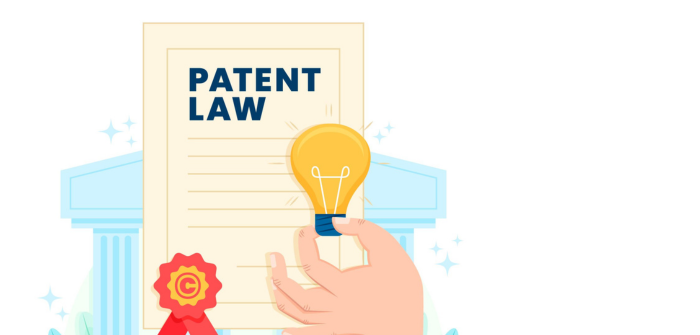
A patent is an exclusive right awarded for an invention. An invention is a product or a technique that, in general, offers a new way of doing something or presents a new technical solution to a problem. A patent is like an investment for an inventor to use the invention solely or earn through licensing it.
In India, patent protection can be achieved by the following:
- Filling up and submitting a patent application to the patent office.
- Inspecting the application and conducting thorough search of all reports available by the patent office
- The application for the grant will be placed for grant once all patent conditions have been satisfied. The Patent Journal, which is released periodically, publishes notification of the grant of a patent.
A patentee has the choice to prevent others from producing, using, practising, or selling the invention without his permission after receiving a patent.
A patentee can transfer the ownership of the patent to another to use the invention by way of:
- By activity of law
Assignment is not defined in Indian Patents Act. The patentee transfers all or a part of his patent rights to the appointee who obtains the right to prevent others from creating, utilising, practising, or disseminating the invention. Section 50(3) of the Patents Act, 1970 states that in case a patent is co-owned by two or more individuals, any share of the patent cannot be assigned to anyone else without the consent of all co-owners.
Types of Assignment
There are three types of assignments.
- Legal assignment
An assignment (or consent to appoint) under a valid patent is one in which the trustee may identify himself as the patent owner. A deed must be used to allot a patent that was created through one. All patent rights are granted to a duly appointed person who is qualified to be its owner.
- Equitable assignment
Any form or agreement including a letter in which the proprietor agrees to share a certain share of the patent with another individual is referred to as the equitable assignment of the patent. In any case, an appointee in such a situation is not eligible to have his name listed as the patent owner in the register. However, they can notify the register of their interest in the patent.
Mortgages are assignments in which the owner transfers all or a portion of their rights to the assignee in return for a fixed sum of money. The owner regains full ownership of the mortgaged property once the debt has been settled. The lender must have their name listed in the register as a mortgagee rather than registering themselves as the proprietor.
Requirements for Patent Assignment
- As mentioned before, patent assignment can only be considered a valid assignment if it has been drafted in writing and duly executed through the legal process.
- The written draft must define all the rights and obligations of both the parties with respect to the patent.
- The assignee shall apply in writing to the Controller of Patents to enter their name into the register of patents. Once the Controller of Patents is satisfied that the assignee has a genuine interest in the patent, they shall enter the details of assignment into their register.
- Form-16 must be duly filled and filed before the Controller General of Patents, Designs and Trademarks. It records the necessary details that must be mentioned for assignment, such as name of the applicant, details of all parties involved, description of the draft through which assignment is being sought.
- Two copies of the deed must be attached to the application as well.
- Fees for the process varies for different individuals and entities and is different when applied physically and through the Internet. A detailed breakdown of the official fees for the process is mentioned in the First Schedule of the Patent Act.
Amending Patent Assignment Agreement
The parties to the assignment may agree to change certain provisions of the agreement in the event of an infringement or mutual concession. The equitable assignment deed can primarily be used to process amendments to patent assignments. If the deed needs to be changed, it must be registered with the Controller of Patents before the assignment process is complete.
Termination of Patent Assignment Agreement
Since a deed is permanent and irrevocable, it cannot genuinely be terminated. A patent assignment pretty essentially constitutes a choice that cannot be undone. If it is a mortgage assignment deed, it can only be terminated.
Patent licensing is a process of granting permission to a third party to extract benefits by selling and using the licensed product. The patent owner gives license to a third party to use his patented invention based on the agreement and royalty. The license can be given for a period of time as per the mutual understanding between patent owner and licensee. During this time period, the licensee can use patented invention and can take financial benefits.
Licensing is a contract between two parties where licensor agrees the terms and conditions of patent owner. Since it is a contract or agreement, it must follow the Sections 10 and 11 of Indian Patent Act 1970. As per Section 68 of the Patent Act 1970, the agreement must be in writing.
Types of License
There are eight types of patent licencing as follows:
- Exclusive license
Exclusive licencing grants the licensee all rights, excluding the title to the innovation. Patent ownership is transferred from the patent owner to the licensee. Only the invention's title belongs to the patent holder. As a result, the licensee takes on all of the invention's obligations. The patent cannot, however, be licenced to another party by the licensee. It is given solely to him/her. As a result, the only individual with permission to exploit the patented invention is the licensee.
- Non-exclusive license
In Non Exclusive Licensing, the license of the patent can be granted to more than one party and all of them can commercialize the patent into the market. Thus, patent owner has rights to license his patented invention to more than one party.
- Sub license
Licensee has rights to issue Sub license to different organizations for making the product of patented invention. Patent owner give rights to licensee and the licensee has the right to issue the license further to a third party that can use patented invention. The financial benefits will depend on the contract between the primary licensee and third party.
- Cross-license
Cross-Licensing is the exchange of licenses between different organizations and creators. When invention requires the support of other products to make its place in the market, Cross-Licensing process is used.
- Voluntary licensing
Licencing on a voluntary basis is a gesture of goodwill towards the community. It also applies to patents for medicines. With voluntary licencing, the owner of a patent can grant the right to produce, import, or distribute a pharmaceutical product to other parties on an exclusive or non-exclusive basis. The licensee is allowed to sell and distribute the goods in a market, according the agreement. According to the terms and conditions outlined in the contract, the patent owner receives their royalty.
- Compulsory licensing
In Compulsory Licensing, the authorization is given to a third party to make, use or sell a patented invention without the consent of patent owner. According to the Sections 84 and 92 of Indian Patent Act 1970, if the specified conditions are satisfied, license can be granted to a third party without permission of patent owner. According to Section 84 of IPA 1970, any person who is interested or already the holder of the license under the patent can request to the Controller for grant of Compulsory License after three years from the date of grant of that patent. The patent office considers the nature of the invention, ability of the applicant to use the invention for the public interest, any measures already taken by the patentees or any licensee to make full use of the invention and time elapsed from grant of the patent. Compulsory Licensing is usually reserved for pharmaceutical patents. Government allows someone to practice patented invention to make, use or sell patented invention without taking permission of patent owner for the public benefits.
- Carrot licensing
This strategy is appropriate when the potential licensee is not using the patented innovation and is not obligated to obtain a licence. In this situation, the patent holder must persuade the party to use his product and explain how licencing it can be advantageous for them. In a marketing strategy known as carrot licencing, the owner of the patent tries to demonstrate to the licensee what may be accomplished by purchasing a licence for it.
- Stick licensing
Stick Licensing is another approach of licensing which is totally contrast of the carrot licensing. In Stick Licensing approach, prospective licensee is already using the patented technology and thus infringing the patent. The patent owner can file a suit against the infringer or settle with the infringer agreeing to license his patent.
- Difference between Assignment and Licenses
Transmission of Patent by Operation of law
When a patentee passes away, the patent's premium passes to his legal representative. If an organisation dissolves, goes out of business, or is liquidated, the patent is transferred by legal means.
A licence is the right granted to use the creation while keeping the exclusive rights with the patentee, whereas an assignment is the exchange of a variety of restriction rights by the patentee to the appointee. As a result, an appointee may transfer his privileges to third parties, whereas a licensee is not permitted to do so or to modify the title of his position.
An appointee is given all of the rights that the patent owner can enjoy, whereas a licensee is not permitted to do so. Additionally, an appointee has the right to file a lawsuit against the infringer while the licensee is not permitted to do so for the infringement of the patent in his name. The patentee can select the best strategy for commercialising his or her discovery after learning the difference between assignment and licence from the aforementioned information.
Share on Social Media
- Preserving Brand Identity: Delhi High Court's Verdict in Burberry Limited's Trademark Battle
- Efficient Business Operations: Unveiling ERP Implementation Strategies
- The Patent Amendments Rules, 2024
- Importance of Hedging to avoid foreign exchange fluctuations.
- Dematerialization of Shares:Transitioning from Physical to Electronic Securities
- Harmonizing Rights: Legal Dimensions of AI Voice Cloning in Music
- Analysis of section 206AA with Double Taxation Avoidance Agreement from recent case law - Judicial update (International Taxation)
- Unlocking Financial Agility with Cloud Solutions
- Beyond Compensation: Empowering Startups Through Strategic Stock Option Programs
- Understanding The Essence Of Performer’s Right Under Copyright Law
- Lapinta, Mini Bypass, Opposite Apco Honda, Puthiyara, Calicut, Kerala - 673004
- +91495 274 4405
- +91 9562 4444 01
- [email protected]

- Calicut, Kerala
- Cochin, Kerala
- Mumbai, Maharashtra
- Ontario, Canada
- Dubai, United Arab Emirates
Quick Links
- News & Events
- Our Offices
- Privacy Policy
Our Services
- Corporate Advisory
- Intellectual Property
- Strategic Consulting
- Audit and Assurance
- Our Sectors
- Startup Services
Subscribe Newsletter
© 2024 Business Consultant & Law Firm - Legacy Partners. All Rights Reserved.
Designed by Nuewelle Digital Solutions LLP
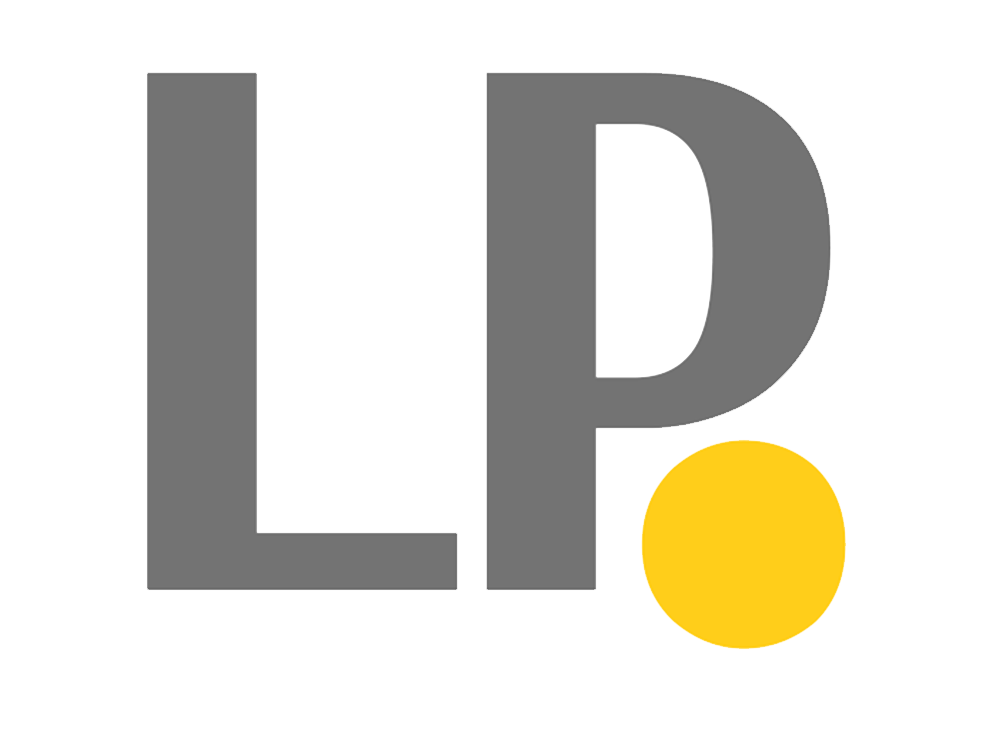
Legacy Partners
We typically reply in a few minutes
An International Guide to Patent Case Management for Judges
6.11 key challenges and efforts to improve patent case management, 6.11.1 lack of uniformity in decisions and specialized knowledge.
Infringement cases are heard by judges of either the district courts or the High Courts not specially trained in the subject of patent law. A challenge that arises under the current regime of trial, especially before the district courts, is that the judges are not equipped to understand technical issues that arise in respect of patents. As the disputes arising under the Patents Act, 1970, are often highly technical in nature, a higher degree of understanding of the subject matter is required to ascertain a question of infringement or lack thereof. 251 For this purpose, specific rules of procedure, including for leading and examination of evidence, are desirable.
6.11.2 Delays in disposing of suits
The Supreme Court has held, pertaining to the issue of delays in the hearing and disposal of matters, that, in matters of patents, trademarks and copyrights, the state of affairs due to such delays is unsatisfactory. 252 It was held that there is a need to adhere to the provisions of Order XVII(1)(2) of the Code of Civil Procedure, whereby proceedings are to be held on a daily basis for quick disposal of the suit. The streamlined and expedited procedure under the Commercial Courts Act, 2015, has significantly helped in reducing delays, though more groundwork is needed. A recent development which has given further impetus to speedier adjudication of IP disputes is the establishment of the Intellectual Property Division in the Delhi High Court.
6.11.3 The IP Division, Delhi High Court
Post the abolition of the IPAB, 253 all pending cases before the IPAB were transferred to High Courts. The High Courts were thus faced with the task of managing both the already pending IPR cases before them as well as the transferred IPAB cases. In the Delhi High Court, this number of pending IP cases was expected to be around 4,000–5,000. With a view to streamlining dispute resolution of IP cases, including patent litigation, the Delhi High Court constituted India’s first “IP Division,” 254 The Division uses specialized sets of Rules, specifically, the Delhi High Court Intellectual Property Rights Division Rules, 2022 255 and the High Court of Delhi Rules Governing Patent Suits, 2022. The Division is vested with various jurisdictions, including the original jurisdiction, the infringement jurisdiction, commercial suits, the appellate jurisdiction from the IP offices, the revisional jurisdiction from the commercial courts, and the extraordinary writ jurisdiction supervising all IP offices, including the Controller of Patents’ Office. 256 Further, the Division provides for various novel features which are, illustratively, as under:
- (i) New forms of evidence recording such as hot-tubbing and remote recording of evidence. 257
- (ii) Preservation of evidence and litigation hold notice. 258
- (iii) Guidance on computation of damages. 259
- (iv) Direction of consolidation of cases. 260
- (v) Constitution of Confidentiality Clubs and redaction of information. 261
- (vi) Summary adjudication of disputes. 262
- (vii) Panel of experts and recruitment of law researchers who are technically qualified like engineers, chemists, pharmacists, or civil engineers, to assist the IP Division. 263
- (viii) Mediation and Early Neutral Evaluation. 264
While the creation of the Division on a non-exclusive basis was notified in July, 2021, 265 the Rules for the Division in its current form, that is the Delhi High Court Intellectual Property Rights Division Rules, 2022, vesting exclusive jurisdiction in the IP Division and laying down procedure for IP disputes, were notified in February 2022. This Division now consists of three Single Judge Benches exclusively dealing with IPR disputes. Since the setting up of the Division, the disposal rate for IP cases, specifically in patent matters, has witnessed substantial improvement. In addition the Delhi High Court has also nominated a non-exclusive IP Appellate Division consisting of a Bench of two Judges which hears appeals from the IP Division.
As of July 2022, the IP Division of the Delhi High Court has approximately 4,000 pending IP disputes out of which a substantial number are trademark and copyright disputes. Patent cases account for approximately 600–650 cases, most of which are appeals transferred from the IPAB. Notably, the filing of patent infringement actions has risen in recent times and approximately 50–60 actions are filed annually before the Court. In the IP Division, trends show that the disposal figures are rising and it is estimated that the Division should bring in greater efficiency.
The IP Division of the Delhi High Court has also been received well internationally. The recent USTR 2022 Special 301 Report discusses the establishment of the Delhi High Court’s IP Division as a positive development and emphasizes continued engagement of the U.S. with India on IP matters. 266
As far as other states are concerned, in the Bombay High Court and the Madras High Court, post the abolition of the IPAB, the total number of pending patent disputes is, approximately, around 450–500 cases and 264 cases respectively. The Gujarat High Court has in fact nominated a non-exclusive bench for adjudication of all IP disputes.
On this note, a testament to the Delhi High Court IP Division’s efficacy in streamlining dispute resolution of IP cases may also be found in the fact that the Parliamentary Committee which had been set up to look into IP issues in India had earlier recommended (in 2021), to re-establish the IPAB, stating that the abolition decision was one taken in a hurry and there should have been stakeholder consultation. 267 However, post-establishment of the IP Division in the Delhi High Court, in April 2022 the Committee revised its recommendation 268 and recommended that IP divisions like at the Delhi High Court should be established in all High Courts in the country. The relevant observations of the Report dated April 6, 2022 read:
3.12 The Committee notes that the dissolution of IPAB would lead to transferring of all IP-related appeals including the pending cases to High Courts and Commercial Courts (in copyright matters). This may create additional burden on such courts which are already reeling under huge backlog of cases with inadequate expertise in hand to deal with IPR matters. It, therefore, opines that establishing an Intellectual Property Division (IPD) with dedicated IP benches as done by Delhi High Court in the wake of abolition of IPAB would ensure effective resolution of IPR cases on a timely basis. The Committee, therefore, recommends that the Government should take appropriate measures to encourage setting up of IPD in High Courts for providing alternative solution to resolve IPR cases.
Thus, the constitution of specialized IP Divisions for speedier and efficacious resolution of IP disputes, specifically patent litigation, seems to be the way forward for India.
Build your custom guide
To create your custom guide, select any combination of the topics and jurisdiction below and then press "Confirm selection".
1. Select topics
2. Select jurisdictions

De-Coding Indian Intellectual Property Law
The Dilemma of Employer-Employee Patent Ownership in India
We’re pleased to bring to you a guest post by Kartikeya Prakash, discussing the lacuna in the Patents Act regarding the ownership of the patents invented by the employee in the course of employment in absence of an assignment agreement with the employer. Kartikeya is a 2nd year student at the West Bengal National University of Juridical Sciences (NUJS), Kolkata.
Kartikeya Prakash

Majority tech companies rely on the inventions of their employees and as a general practice, patent the inventions in the company’s name. The employees assign their patent rights to the employer through pre-assignment (usually a part of the employment contract) and assignment agreements (signed after the invention is realised). In India, this practice becomes necessary owing to the lacuna in the Indian Patents Act, 1970. No provision in the Act clarifies the ownership of the patent invented by the employee under the ageis of the employer. While its counterpart, the Indian Copyright Act, 1957 has Section 17 which specifically assigns the copyright to the employer if made in the course of employment (unless there is a contract to the contrary). Interestingly, in spite of being an older statute, the Copyright Act encompasses the specific provision while the Patents Act does not. The same issue regarding the differences between both the statutes had been pointed and tracked by Prof. Shamnad Basheer here .
In the absence of a concrete provision, the assignment agreement backs the employer to register the patent under his name because under the Indian Patents Act, 1970, the inventor is considered the “first owner” of the patent. One unusual instance is when the employees are not made to sign these pre-assignment and assignment agreements. What power does the employer have now to register the patent? And who holds the patent for the invention in such a scenario?
The legislators in India missed the trick by failing to include a ‘deemed ownership’ provision in the Patents Act, 1970. Whereas, such provisions have been codified under Section 39 of UK Patent Act , Section 132 of Israeli Patent Act , and Section 6 of the Chinese Patent Act . This deeming provision is based on the principle of “duty to invent” under which a person who has a duty to invent cannot get the patent registered in his name. The rationale behind this principle is that if the employee has used the facilities, technical know-how and resources of the employer, the employer should not be deprived of the benefits. In turn, implying that an employee, who conceived the invention during the ‘course and scope of employment’ cannot get the patent in his name. This argument of ‘duty to invent’ was presented before the Bombay High Court in Darius Rutton Kavasmanek v. Gharda Chemicals . But, the court refused to analyse the same as it could not critique on the merits of the case as it was an appeal for injunction.
In addition to the ‘duty to invent’ argument, another way of addressing this ownership conundrum is the use of the “shop-right” principle, which was brought up in the United States. Unfortunately, the same has not been in use in India. Shop-right is a non-exclusive and non-transferable licence with the employer to use the invention without any payment of royalties, even if there is no agreement for the same. Under this doctrine, even if the employee, who is the owner of the patent, sells his right in the patent, the employer retains his shop-right in the patent.
The above mentioned lacuna in the Indian patent law is especially problematic for multinational corporations involved in R&D, when their inventors are Indian employees. Section 39 of the Patents Act states that whenever a resident in India makes an application for a patent or causes an application for a patent to be made in a country outside India , needs to get permission from the Controller of Patents. For example, a company based in the United States wants to file a patent in the United States, but the inventors are resident Indian employees. Now, it can be argued that the Indian employees, through their patent assignment agreement have ‘caused’ the application for the patent to be made in the United States thereby requiring permission from the Controller of Patents in India. This is a major hindrance in speedy applications and grants of a patent to the employer-company. In a field as dynamic as intellectual property, such unnecessary delay is likely to impact the use of resident Indian employees for innovation. However, the insertion of a provision that deems ownership of the patent to the employer/company will certainly go a long way in tackling such problems.
It is noteworthy that even the United States Patent Act does not enshrine any provision regarding employer-employee ownership of patent. But, the courts have set various precedents to aid the employers. In Goodyear Tyres and Rubber Company v. Miller (United States) , the court opined that, “it is feared that if a company will be denied the fruits of its success, then it will cease to subsidize and experiments will go.” The Indian courts can take cognisance of the same in future judgments and set out better precedents that aid in filling loopholes in the patent regime.
With the current ownership regime of patent law in India, the employer runs a risk of not owning the invention despite making investments for the same. This may discourage employers from investing in research opportunities. A similar stance in India, as that in the United States, United Kingdom and other countries will certainly help in resolving the patent ownership issues between the employer and the employee. At the minimum, the employer should be granted a say in the patent even in the absence of an pre-assignment / assignment agreement for the same, if the invention was realised using the resources of the employer and during the course of employment.
- Click to share on WhatsApp (Opens in new window)
- Click to share on Twitter (Opens in new window)
- Click to share on LinkedIn (Opens in new window)
- Click to share on Facebook (Opens in new window)
- Click to share on Telegram (Opens in new window)
- Click to share on Mastodon (Opens in new window)
- Click to print (Opens in new window)
- Click to email a link to a friend (Opens in new window)
About The Author
Related Posts
‘non’-pharmaceutical substance and efficacy under sec 3(d), time to look beyond compulsory licenses a glimpse at the ribociclib case, dhc rules on jurisdiction for revocation petitions and appeals post dissolution of ipab, call for interns and spicyip fellows, 3 thoughts on “the dilemma of employer-employee patent ownership in india”.
Good topic. Few points which are also important:
1. Although the Patents Act fails to include a deeming provision, any application for grant of patent requires a form to be filed for proof of right where the employee confirms the employer’s ownership during the filing of patent application 2. Some of the old employment contracts may not cover ‘work from home’ concept and therefore usage of employer’s resources may be questionable for factoring ownership 3. Gharda Chemicals decision went in appeal further. That should be checked. Gharda decision enshrines the importance of not having deeming provisions since it examines a possibility where a person (Director who may or may not be an employee) is likely to own certain inventions in his individual capacity. Instead of simply introducing deeming provisions, it is also important that the Act speaks about the exceptions to this general rule. Or else these provisions could be misused by employers which would discourage inventors 4. Another school of thought is that not having deeming provisions provides flexibility to foreign parent companies to have direct assignment of rights in their favour as opposed to first being directly owned by the Indian subsidiary (through deeming provisions) and then being assigned by the Indian Sub to the parent. This two layered process at times may not be tax efficient. 5. Having deeming provisions may not overcome Section 39 issues since inventor details are still required to be mentioned – which comes back to Indian resident inventor issues under Section 39. Even if India changes these provisions and another country still requires these details, it could still create issues under Section 39. Having said that Section 39 has been a hindrance (given that it is a rare penal provision under the Patents Act) especially for inventions which are not patentable in India- conservatively most seek a clearance to avoid issues. But Patent Office has been quick to provide such clearances. Balanced position would be to allow retrospective permissions in case the invention is not likely to affect Indian security interest- through defence/atomic energy related inventions (the intent of having Section 39) 6. The decision in Neetu Singh v Rajiv Saumitra https://indiankanoon.org/doc/91517518/ is interesting where it touches upon whether a Director is an employee or not?
The above are my quick thoughts. Please excuse typos
Also, in case of start-ups, Founders may develop the invention before the Company (future employer is formed) and it is important to cover this aspect in the Founder’s employment contract to state that past creations are also assigned.
Is proof of right required to be filed under section 7 by assignee, necessarily means assigning all the rights of inventor to the assignee?
Leave a Comment Cancel reply
please describe the impact on consumers in these IP litigations.
Seems like a one-sided commentary. From the decision, one understands the fine was imposed pursuant to Section 119 of the…
On the Macleods Pharmaceuticals case, I have never seen such a strange argument made on the effect of revocation or…
Thank you for sharing this. The notification is strikingly similar to the AP case. On a quick glance though, it…
Thank you for discussing this important development. Coincidentally, recently NCERT issued a public notice threatening to institute a copyright infringement…
Copyright © 2024 SpicyIP
Discover more from SpicyIP
Subscribe now to keep reading and get access to the full archive.
Type your email…
Continue reading
- Policy & Programs
- Achievements
- Skip to Main Content

- Show more sharing options
- Copy Link URL Copied!
India embarks on new patent regime with aim of streamlining procedures
Sponsored by.

Ranjan Narula and Suvarna Pandey of RNA Technology and IP Attorneys welcome the introduction of India’s new patent rules and highlight the key changes
The Patents (Amendment) Rules, 2024 came into effect on March 15 2024, with notification by the Ministry of Commerce and Industry (Department For Promotion of Industry and Internal Trade) in the Official Gazette of India.
The changes are summarised below, which aim to expedite application examinations and simplify compliance, both during prosecution and after the granting of a patent.
Deadline for filing a request for examination
The deadline for filing a request for examination has been reduced to 31 months from 48 months. The period is counted from the date of filing, or the priority date of, the application, whichever is earlier. This would impact Patent Cooperation Treaty applications where the applicant enters India in the 31st month. At the stage of filing the application, a request for examination must be filed.
Statements and undertakings regarding foreign applications
Previously, any development regarding the filing, or a status change, of a patent application in foreign countries was to be communicated to the Indian Patent Office (IPO) within six months of the new filing or status change. This was troublesome for applicants, in having to coordinate with the lawyers of different countries and provide timely information to the IPO.
Under the new rule, an updated filing, or a change of status, concerning a foreign patent application will have to be communicated within three months from the first examination report (instead of continuous submission). Furthermore, the controller may use available databases in considering the information relating to applications filed in a country outside India.
The controller can direct the applicant to furnish a fresh statement and undertaking through Form 3 within two months of the communication. The controller can also condone the delay or extend the time for filing Form 3 by up to three months upon the filing of a request.
The changes, in the authors’ view, are a big relief for applicants, as non-compliance with this provision was a ground of opposition, as well as revocation. The amended rules – in providing that the controller may use available databases to consider the information relating to applications filed in a country outside India – have relaxed this requirement.
Working statements
A working statement shall be furnished once every three financial years (India’s financial year is from April 1 to March 31), starting from the financial year commencing immediately after the financial year in which the patent was granted. The first working statement (on Form 27) must be submitted within six months after the end of the next financial year from the date of grant and, thereafter, Form 27 shall be filed within six months after the end of every third financial year. For example, if a patent is granted in May 2024, the working statement will have to be filed in 2028 (for the financial years 2025 to 2028) under the new rules.
The controller may condone the delay or extend the time to file the statement by up to three months upon a request made via Form 4.
The structure of Form 27 has also changed. Particularly, the requirement to provide information on the revenue for the patent is deleted, which is a big relief for companies. The patentee only has to disclose if the patent is working or not working.
The new form also provides an option to the patentee to consent if it would like to be contacted for licensing the technology, etc.
Earlier, the working statements were to be filed annually. There was also no provision of an extension.
Filing of a divisional application
A divisional patent application can be filed in respect of an invention disclosed in the provisional or complete specification, or in another divisional application.
Previously, the Patents Act, 1970 and the Patents Rules, 2003 did not specify that it is possible to file a divisional application claiming priority over another divisional patent application.
New provision of a grace period
An applicant can avail itself of a grace period of a year for the filing of a patent application, if there has been an earlier publication or the invention has been previously been used. The rule also mentions the situations where an invention was displayed at an industrial or another exhibition, and where a description of the invention in a paper is read by the true and first inventor before a learned society.
New provision of a certificate of inventorship
Inventors can also obtain a certificate of inventorship for a granted patent.
Previously, the name of the inventor could be mentioned in the patent certificate by filing Form 8, before the grant of a patent, but there was no provision to include the inventor’s name in a patent certificate after the patent was granted. However, a new form, 8A, has been introduced, which can be filed after the grant of a patent to obtain a certificate of Inventorship.
Changes to the pre-grant opposition procedure
Under the amended rules, a new screening process has been created for pre-grant oppositions. A pre-grant opposition will only be considered on the establishment of a prima facie case made out in the representation filed by the opposing party.
On consideration of the representation, if the controller is satisfied that no prima facie case is made out, they shall notify the opponent accordingly, and unless the opponent requests to be heard in the matter, the controller shall, within one month from the date of the notification, pass an order recording the grounds for refusal of the representation.
If the opponent requests a hearing, the controller shall, after giving the opponent an opportunity of being heard, pass an order within one month from the date of the hearing.
The applicant can file the statement and evidence within two months from the date of the notice. Previously, this period was three months.
Previously, there was no fee for filing a pre-grant opposition; however, the amended set of rules require a fee of INR 4,000 for an individual, a small entity, a startup, or an educational institute, and INR 20,000 for others to file a pre-grant opposition.
10% discount in the annual renewal fees
If the renewal fees are paid in advance through an electronic mode for a period of at least four years, a 10% reduction in the fee will be offered for a renewal.
Increasing the scope of the controller’s authority regarding delays
Previously, Rule 138 (concerning the power to extend the time prescribed) empowered the controller to condone delays for a maximum period of a month. However, the extension is now applicable for any act and the controller can condone a delay for a period of up to six months. Also, an extension request may be made any number of times within the specified period of six months.
This is useful in activities where the deadline was previously strict, such as a national phase entry or a request for examination. However, the official fee for seeking an extension is INR 50,000 per month.
Final thoughts on India’s new patent regime
The new patent rules are a positive step to encourage inventors to protect their innovation by making the procedures applicant friendly. Also, the requirements concerning working statement filing that have been a cause of consternation among patent holders have been addressed in the amended rules.

More from across our site

As a premium subscriber, you can gift this article for free
You have reached the limit for gifting for this month
There was an error processing the request. Please try again later.

COMMENTS
License. Assignment refers to the transfer of ownership and of the patent to the assignee. A license grants you the permission to use any patented invention, which would otherwise be referred to as infringement. Assignments must be executed in writing. Licenses can be granted without any written documentation.
6.1 Overview of the patent system 6.1.1 Evolution of the patent system. Intellectual property (IP) rights are governed by national law, which for members of the World Trade Organization (WTO), shall be in conformity with the Agreement on Trade-Related Aspects of Intellectual Property Rights (TRIPS Agreement). 1 The TRIPS Agreement sets out the objective of IP rights in Article 7:
Patent Rights Unveiled: The Distinction Between Patent Assignment and Licensing in India August 29, 2023 By Khyati Dave. To safeguard our original invention of any form be it a piece of music, a work of art, a creatively written draft, a complex set of codes, or any such masterpiece that hatched from an intellectual mind, our Indian government has provided us with a particular set of rights ...
of assignment is not specified, it will be deemed to be five years from the date of the assignment. If no territory is specified, the assignment is presumed to extend to India only. Patents The Patents Act does not specifically provide for the assignment of future patent rights. However, the parties can provide for such assignment by way of a ...
Section 68 of the Indian Patents Act 1970 provides for the mortgage of, license or creation of any interest in the patent. "Assignments, etc., not to be valid unless in writing and duly executed. 1 —An assignment of a patent or of a share in a patent, a mortgage, license or the creation of any other interest in a patent shall not be valid ...
Discover how the patent system works in India. The WIPO International Patent Judicial Guide is a public digital guide which allows judges, practitioners and academics to easily browse and extract relevant information from 10 different jurisdictions. ... 7.6.1 Jurisdiction and case assignment 7.6.2 Statements of case (complaint and answer) 7.6.3 ...
Patent Assignment in India. The term "patent assignment" is not defined in the Indian Patent Act, 1970. However, the Act states that an assignment of a patent or of a share in a patent, a mortgage, or the creation of any other interest in a patent shall be valid only if the same is in writing and the agreement between the parties is in the form of a document.
The journey of the Indian patent regime is reflected in three different periods: colonization, post-independence and globalization. 7. Colonization. India inherited its patent regime from the British rule. When the British colonization of India ended, the Indian Patents and Designs Act, 1911, was in force and had created a system of patent ...
The patent system in India is governed by the Patents Act, 1970 (No.39 of 1970) as amended by the Patents (Amendment) Act, 2005 and the Patents Rules, 2003. The Patent Rules are regularly amended in consonance with the changing environment, most recent being in 2016.
If after filing an application for patent, the applicant assigns the rights of his invention by written assignment or agreement to some other person, then that person (the claimant) may make an application, in Form 6 (sample Form 6, pasted below) along with a fee of Rs. 4,000/- (in case of an online filing by a legal entity such as corporate ...
Intellectual property in India is a subordinate office of the Govt of India & administers the Indian law for Patents, Designs, Trade Marks & Geographical Indica
The Indian Patent and Design Act, 1911 repealed all previous acts. The Patents Act 1970, along with the Patent Rules 1972, came into force on 20 April 1972, replacing the Indian Patent and Design Act 1911. ... A license or an assignment must be in writing and registered with the Controller of Patents, for it to be legitimate and valid. The ...
A patent assignment is an agreement where the assignor transfers the patent rights to the assignee. It is a process of how to patent an idea or transfer his or her interest to an assignee, and enforce the patent. The assignee receives the original owner's interest and rights to intellectual property. He can sue others for making and selling ...
A patent will not be granted unless a satisfactory "proof of right" is provided. The Indian patent system provides a simplified procedure of establishing this "proof of right", by allowing ...
Patent Laws and Regulations covering issues in India of Patent Enforcement, Patent Amendment, Licensing, Patent Term Extension, Border Control Measures. Patents Laws and Regulations Report 2024 India. ... The confirmatory assignment may be understood as an assignment, executed later, which confirms an earlier-made assignment between the parties ...
The term 'assignment of patent' is not defined in the Indian Patents Act. An assignment is an act by which the patentee assigns whole or part of the patent rights to the assignee who acquires a right to prevent others from making, exercising, using, or vending the invention. There are three kinds of assignments.
Assignment is not defined in Indian Patents Act. The patentee transfers all or a part of his patent rights to the appointee who obtains the right to prevent others from creating, utilising, practising, or disseminating the invention. Section 50(3) of the Patents Act, 1970 states that in case a patent is co-owned by two or more individuals, any ...
Assignment of Patents. An assignment of a patent has to be made in writing and the agreement between the parties concerned is required to be reduced to the form of a document embodying all the terms and conditions governing their rights and obligations, which must be duly executed. (Section 68, Patents Act, 1970).
Discover how the patent system works in India. The WIPO International Patent Judicial Guide is a public digital guide which allows judges, practitioners and academics to easily browse and extract relevant information from 10 different jurisdictions. ... 7.6.1 Jurisdiction and case assignment 7.6.2 Statements of case (complaint and answer) 7.6.3 ...
The employees assign their patent rights to the employer through pre-assignment (usually a part of the employment contract) and assignment agreements (signed after the invention is realised). In India, this practice becomes necessary owing to the lacuna in the Indian Patents Act, 1970.
Please Enter Filing office. Select Logical Operator. Select Search Field. Please Enter International Patent Classification (IPC) Select Logical Operator. Select Search Field. Please Enter P.C.T. Application Number. Select Logical Operator. Select Search Field.
The Patents (Amendment) Rules, 2024 came into effect on March 15 2024, with notification by the Ministry of Commerce and Industry (Department For Promotion of Industry and Internal Trade) in the Official Gazette of India.. The changes are summarised below, which aim to expedite application examinations and simplify compliance, both during prosecution and after the granting of a patent.
Patent infringement is the violation of the exclusive rights of the patent holder. The Indian Patents Act 1970, ("Patents Act") does not specifically define activities or situations that constitute patent infringement. Section 48 of the Patents Act gives the patent holder/ patentee an 'exclusive right' to exclude any third- party from ...
Conclusion. In conclusion, patent infringement refers to the unauthorised use or manufacture of a patented invention without the consent of the patent owner. The Indian Patent Act, 1970 provides several remedies to address patent infringement, including injunctions, damages, and seizure, forfeiture or destruction.